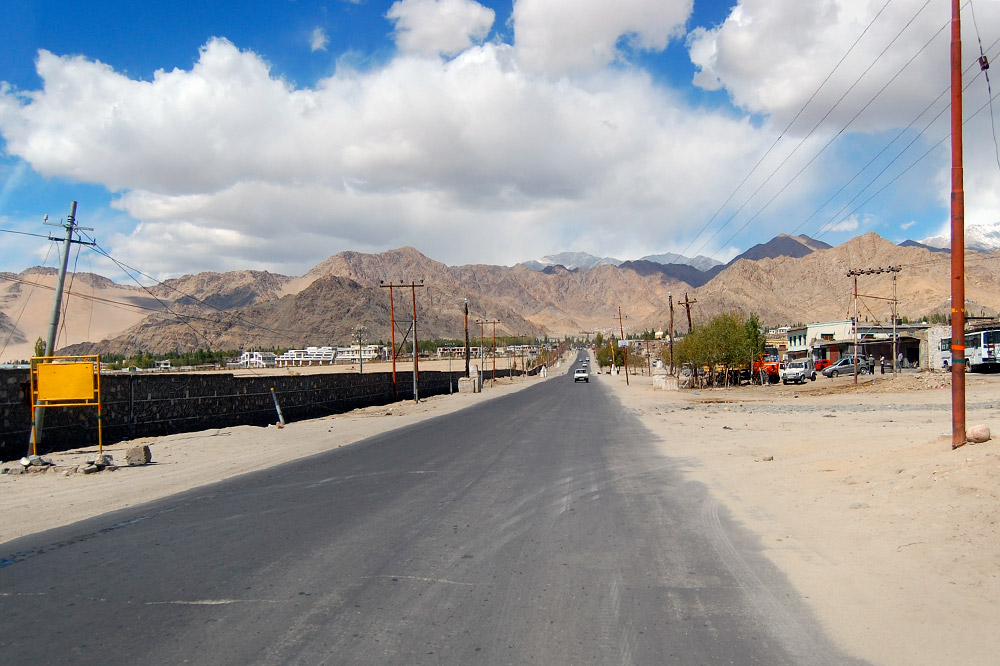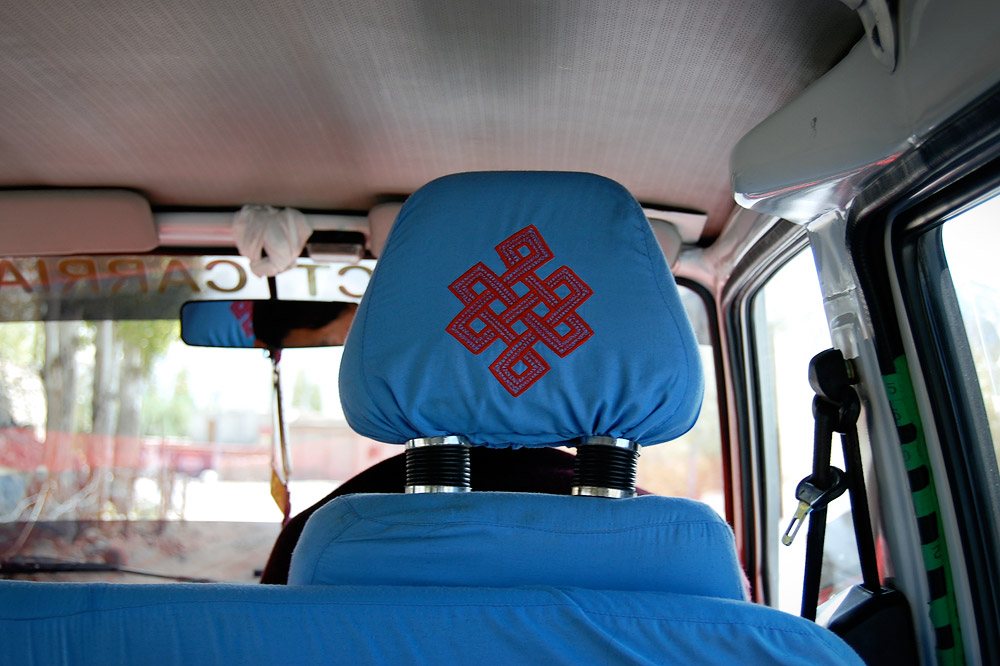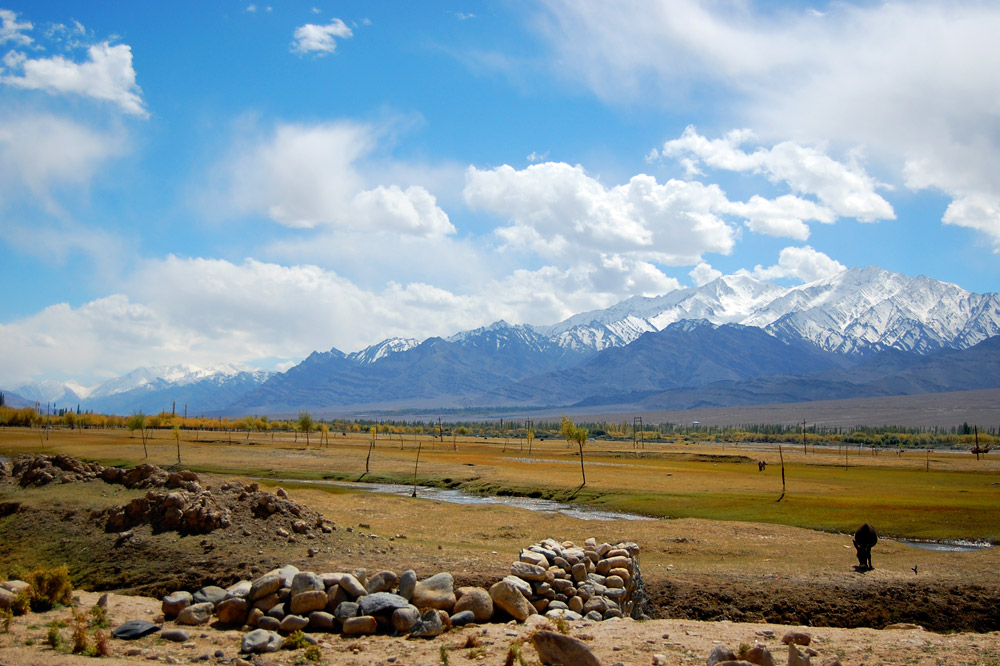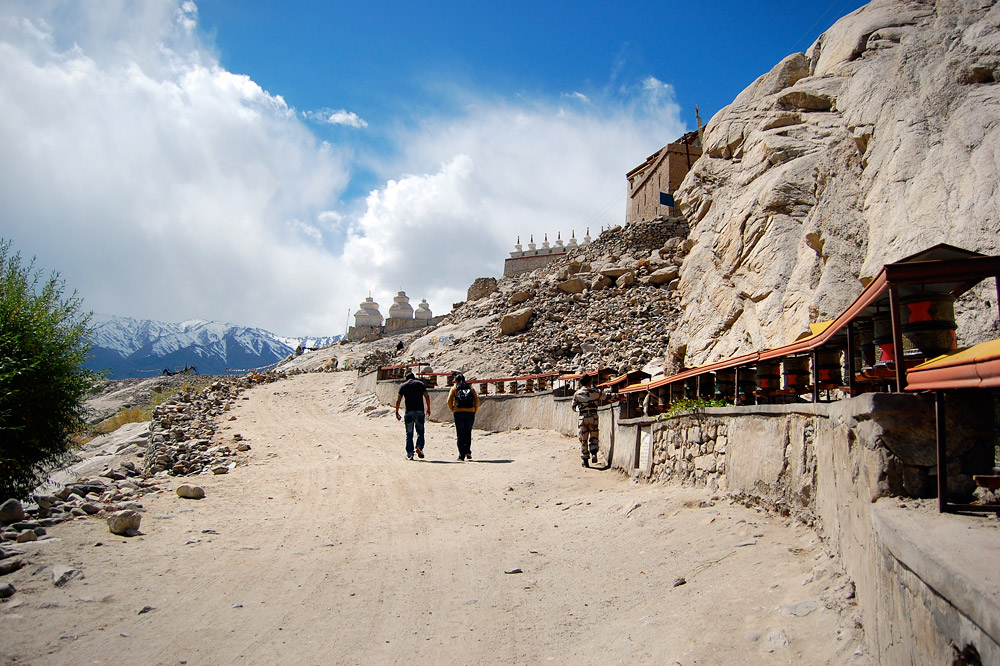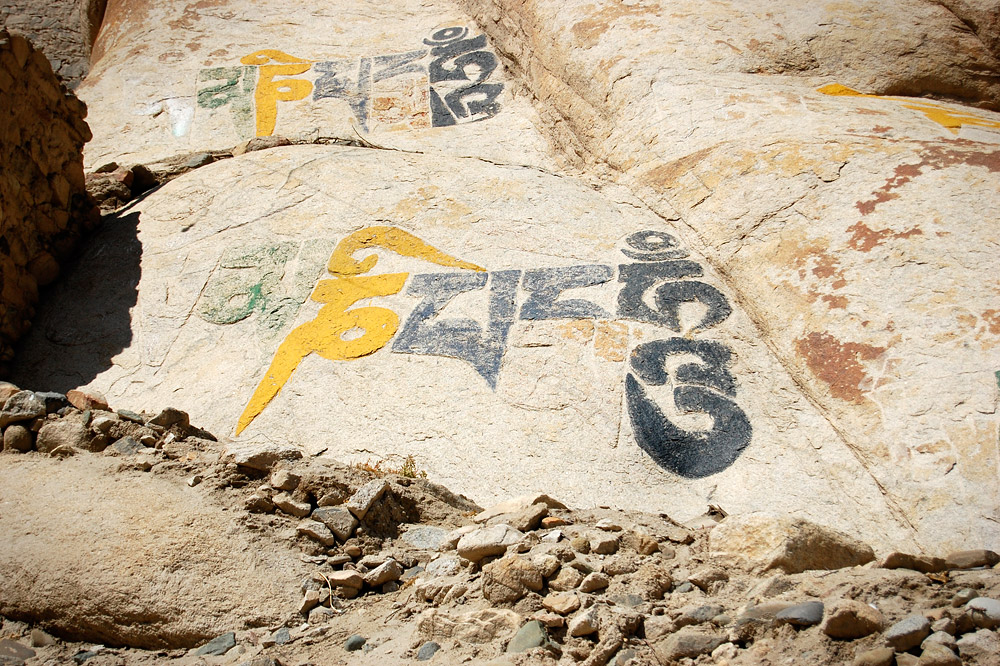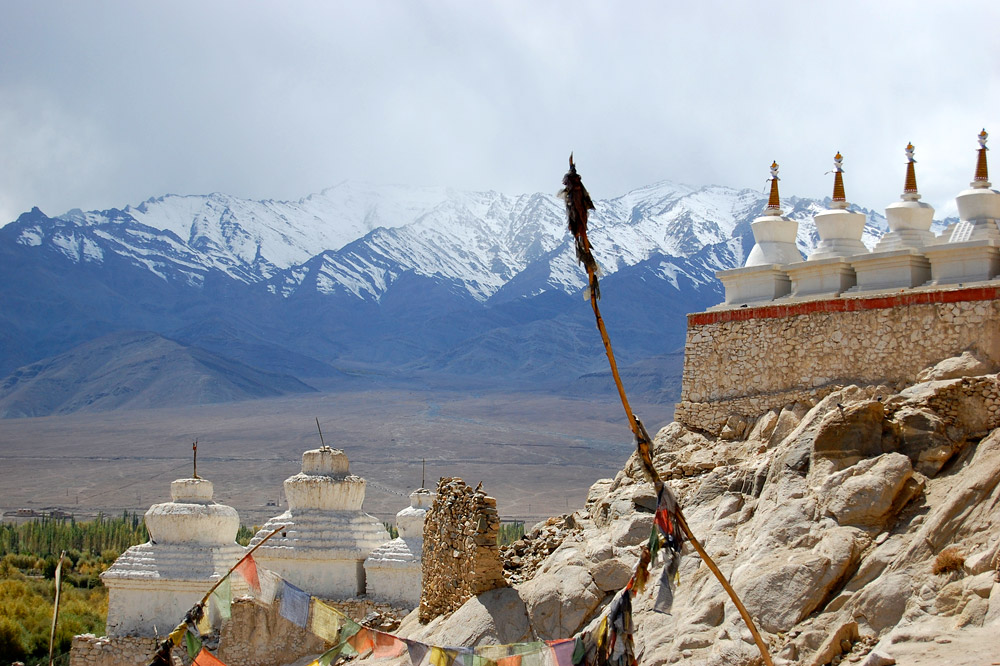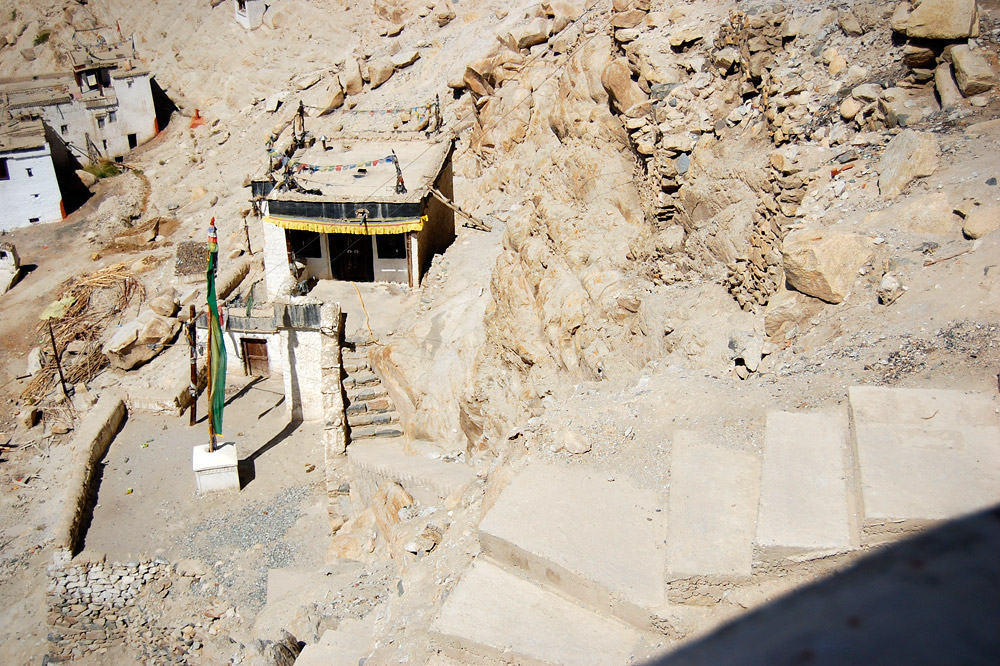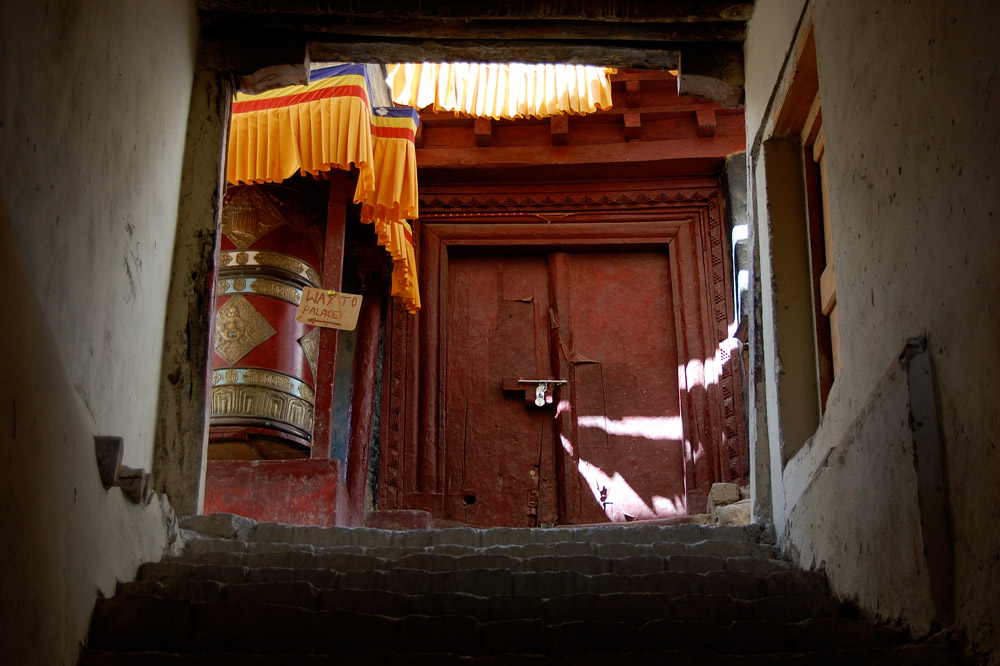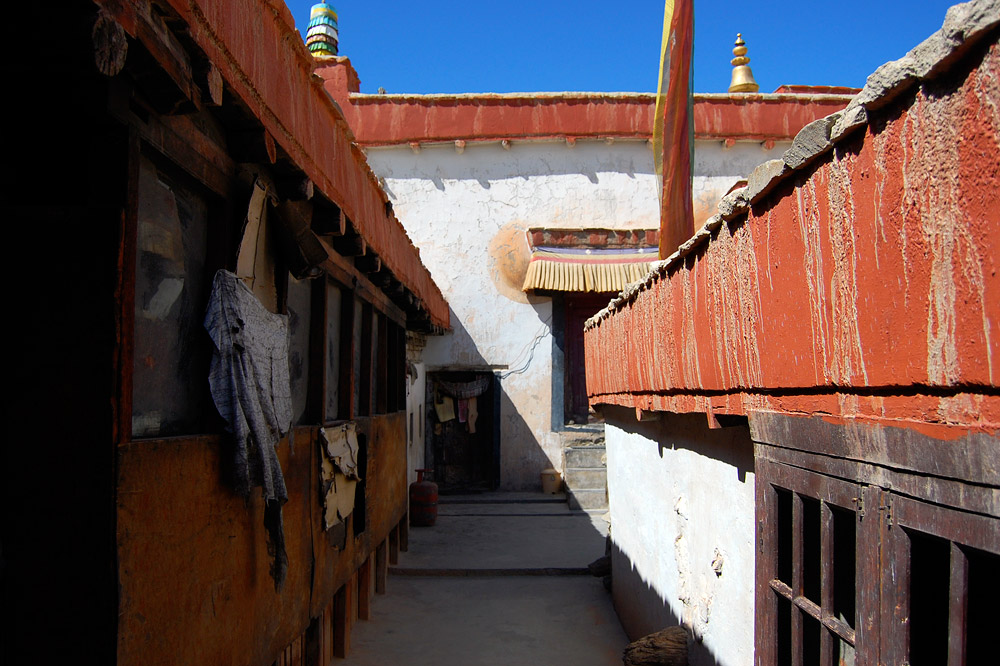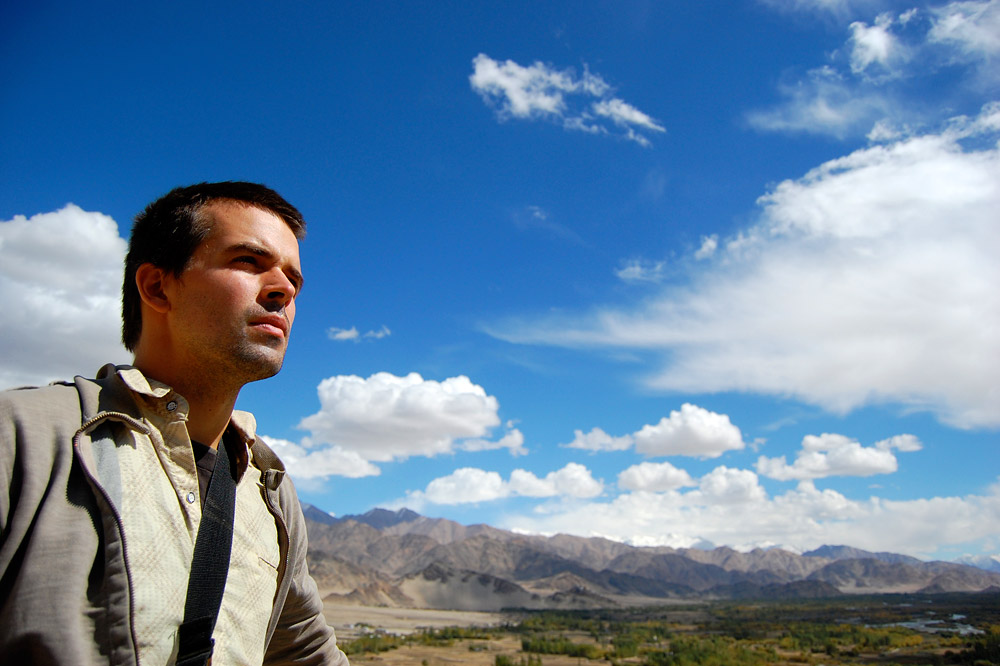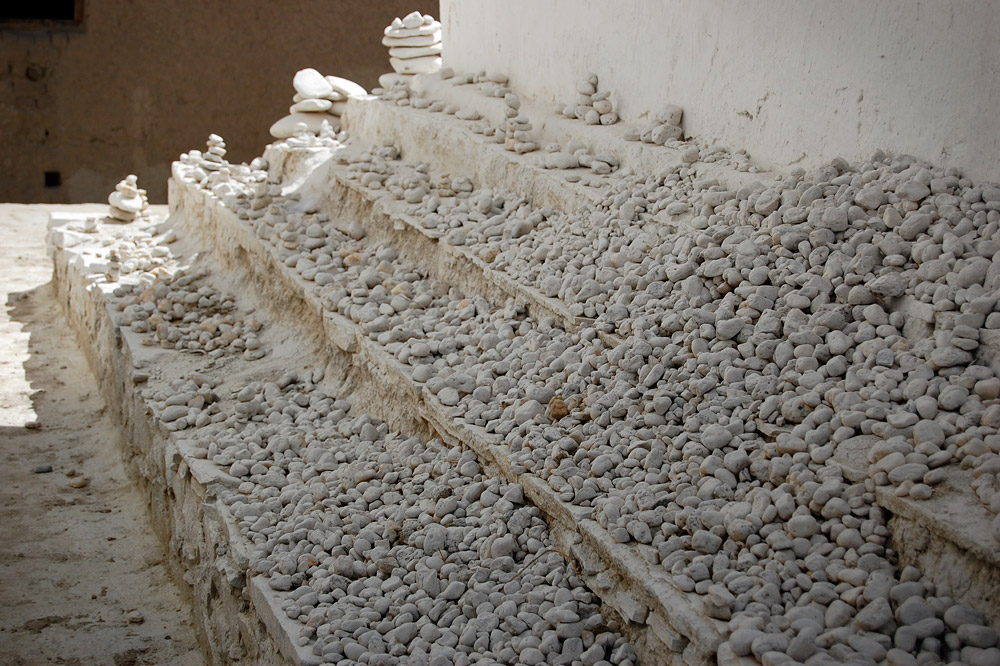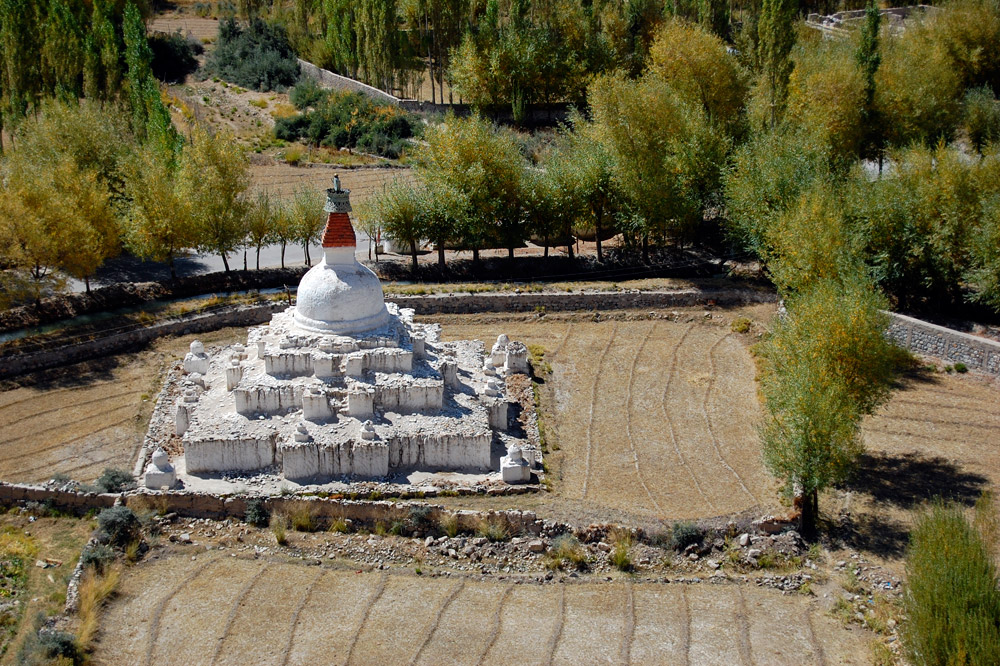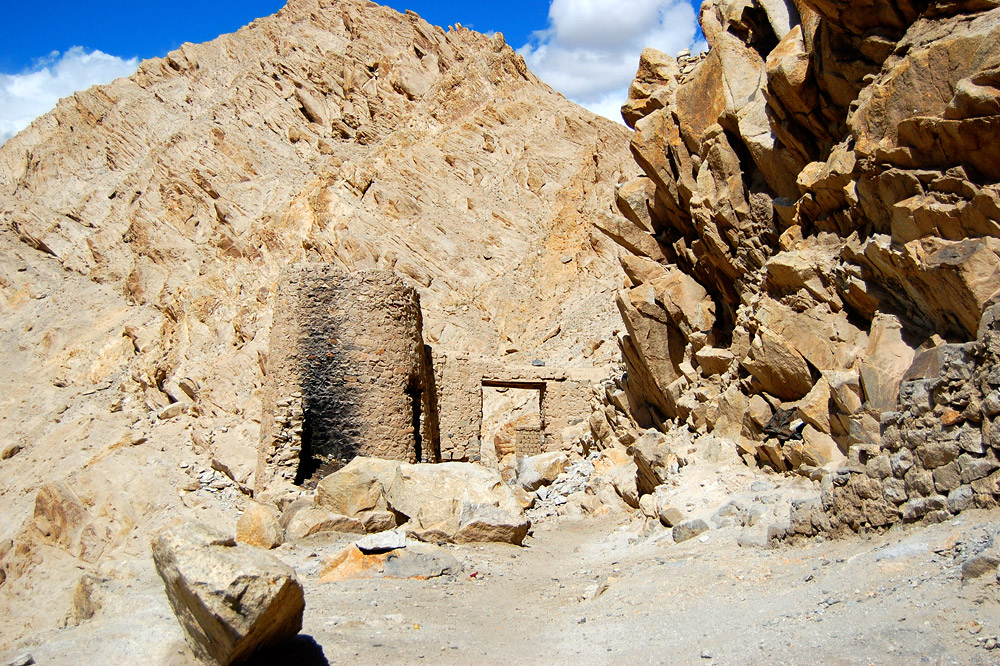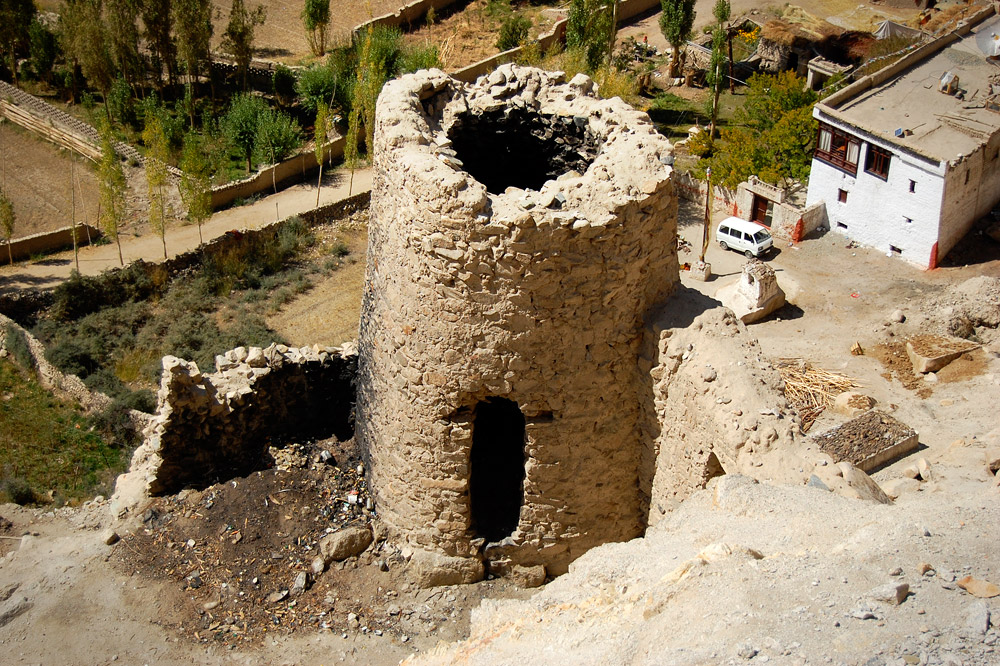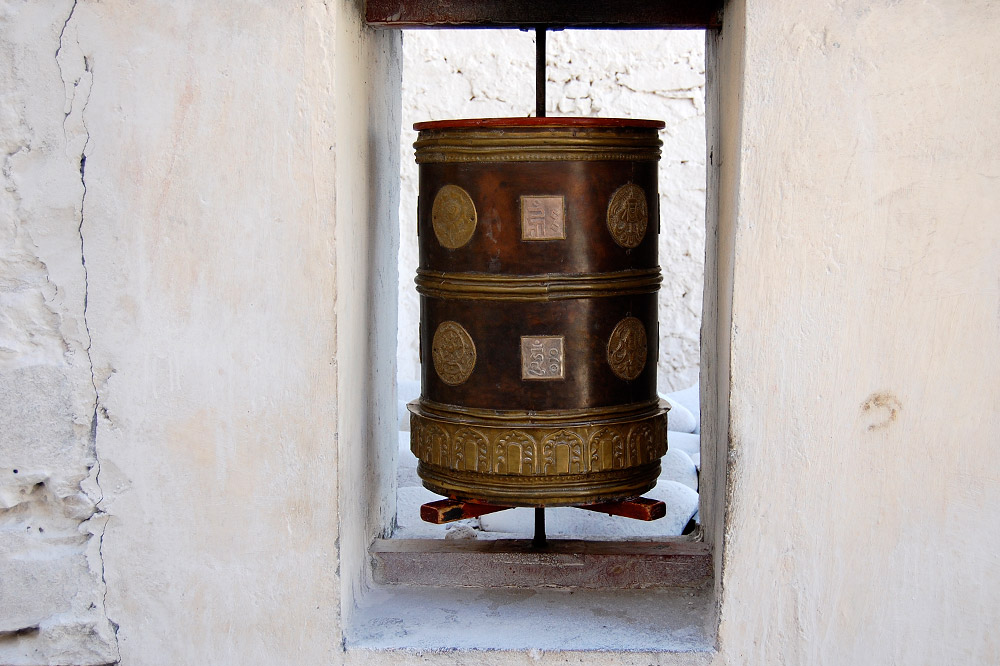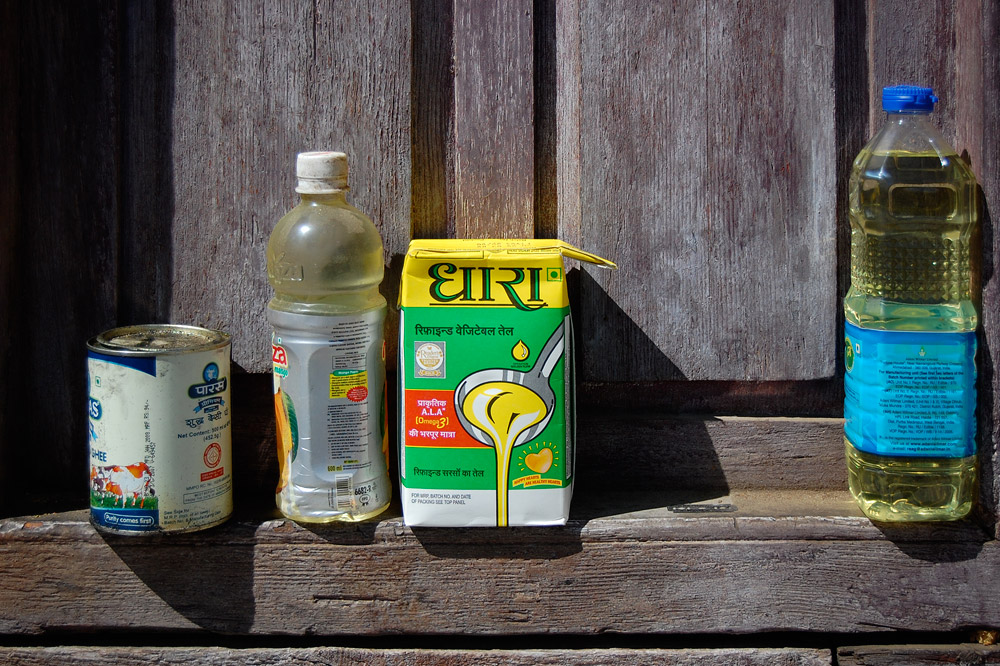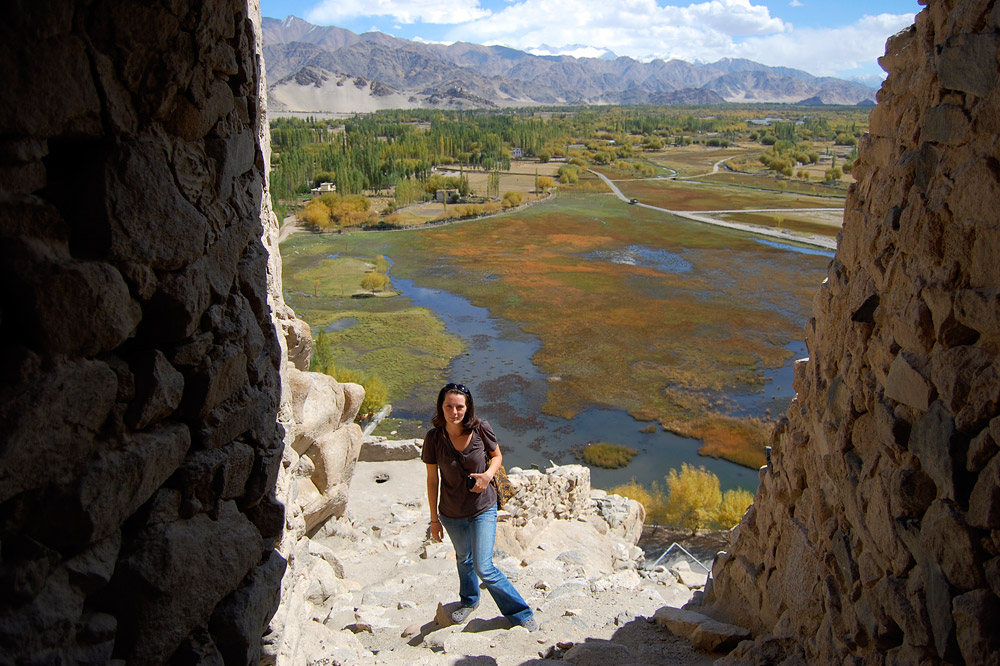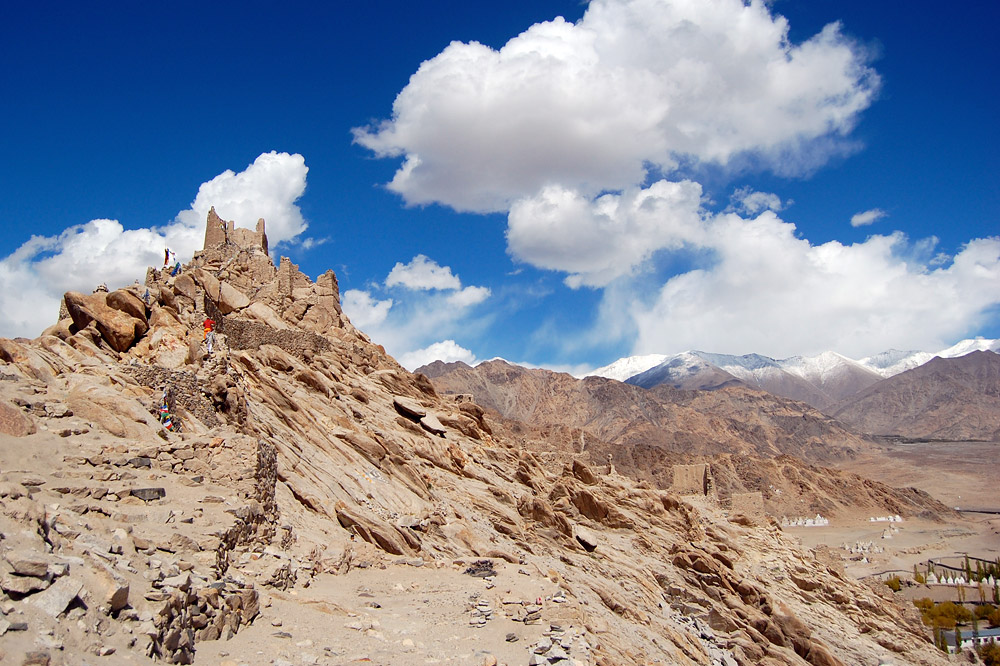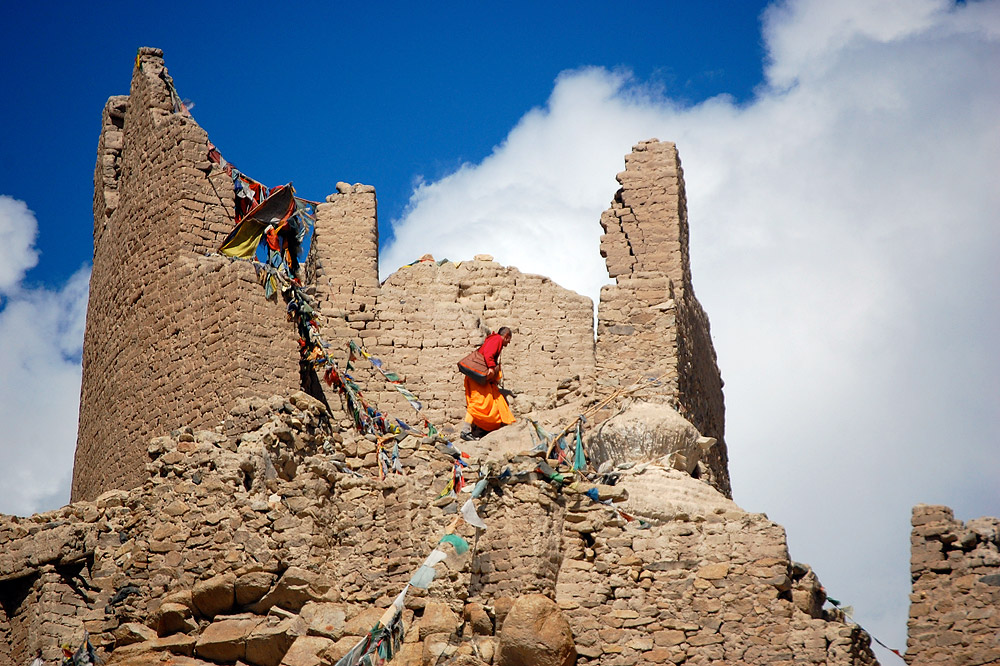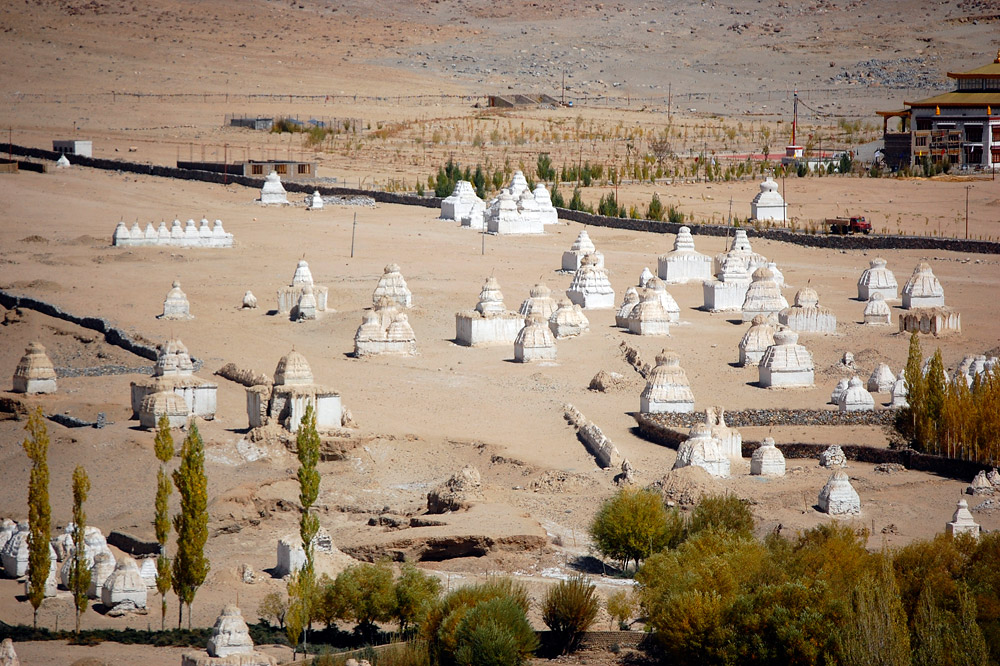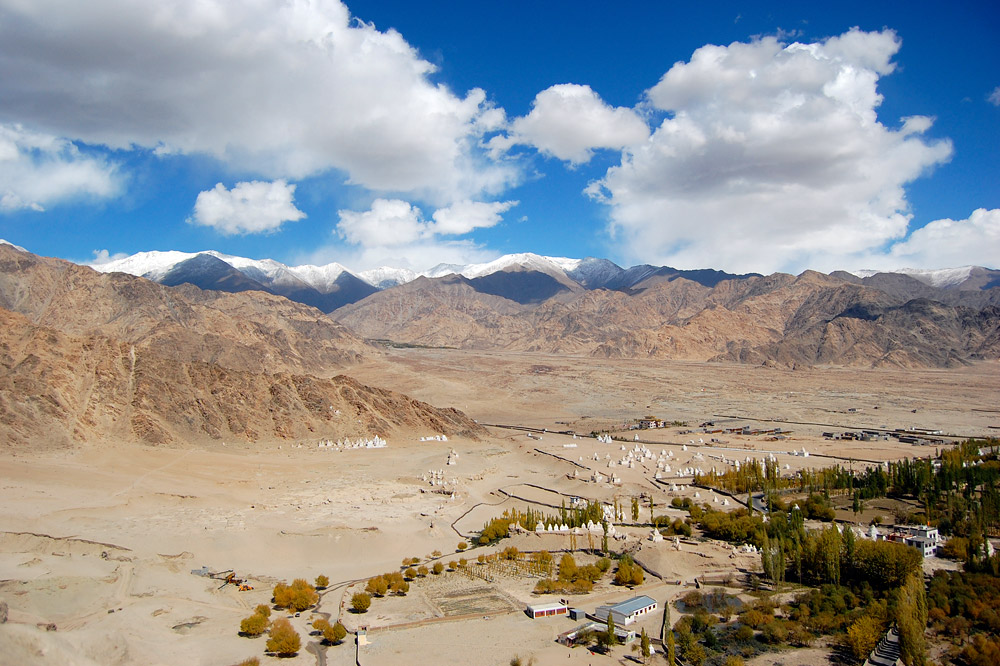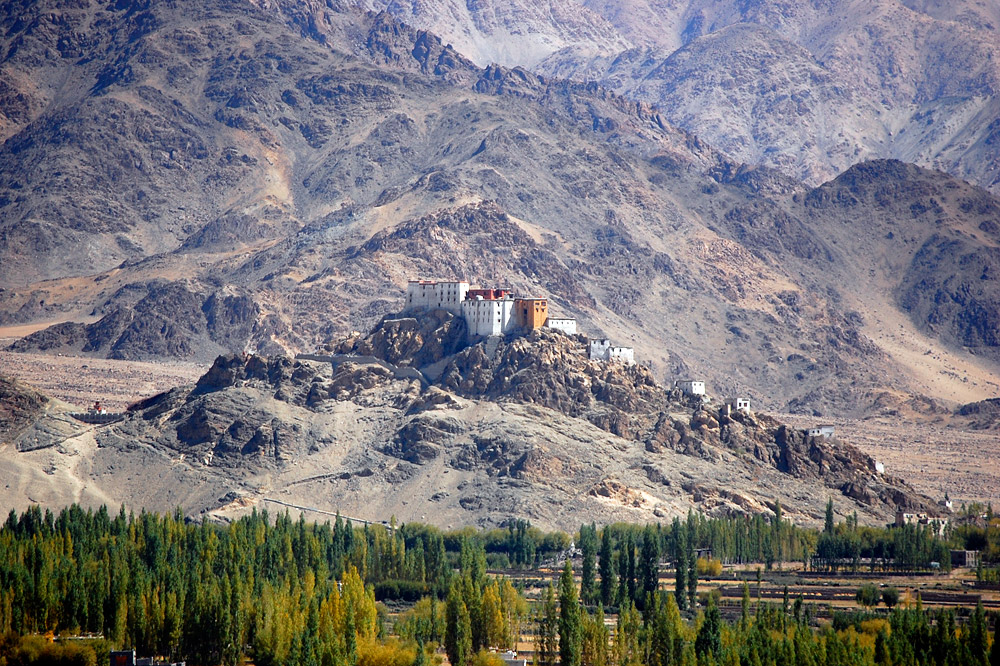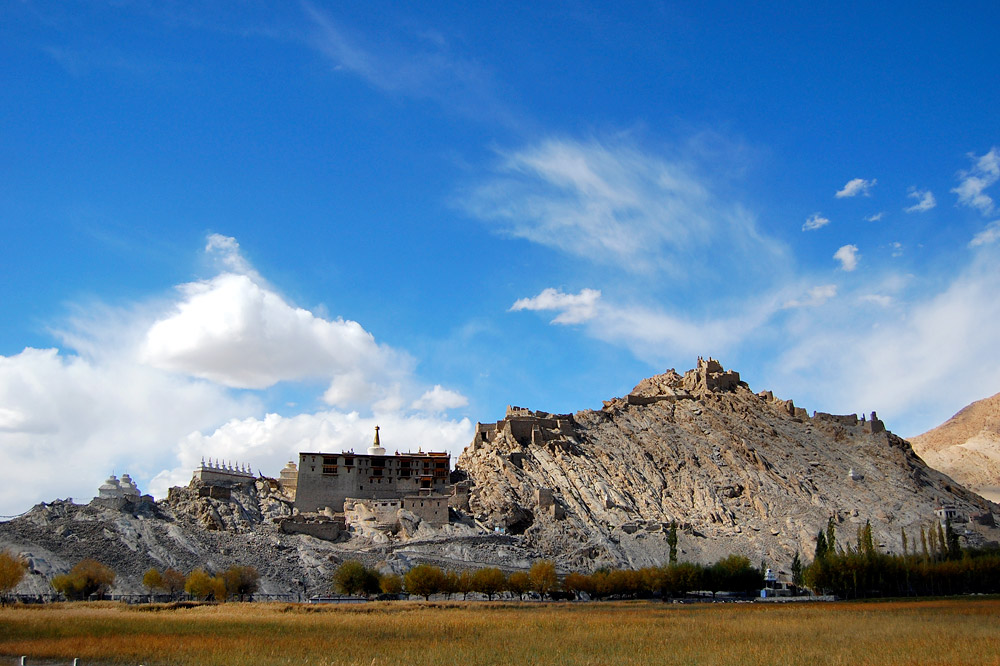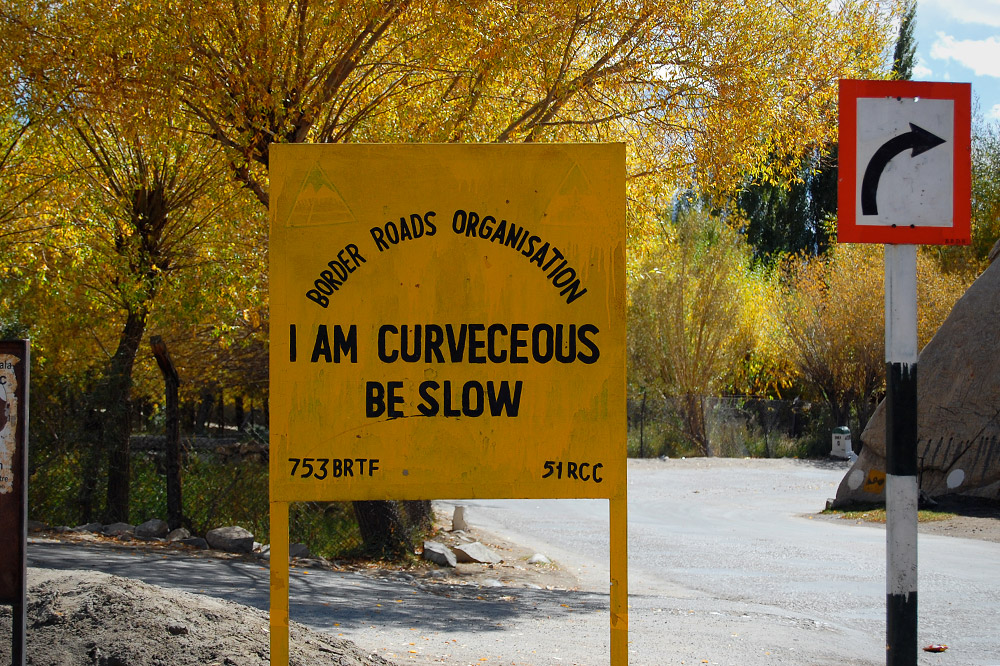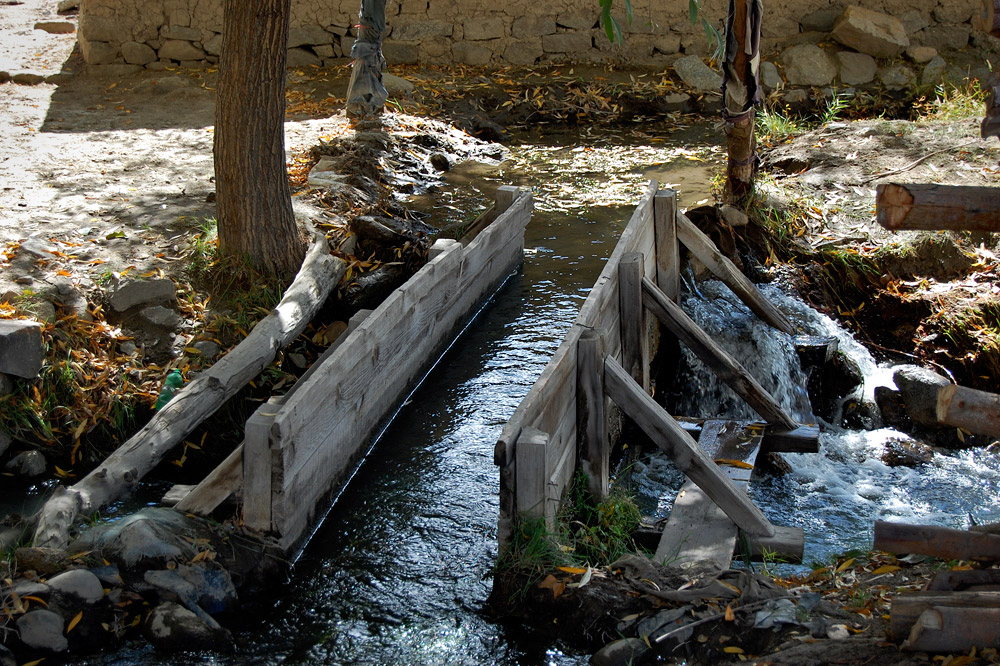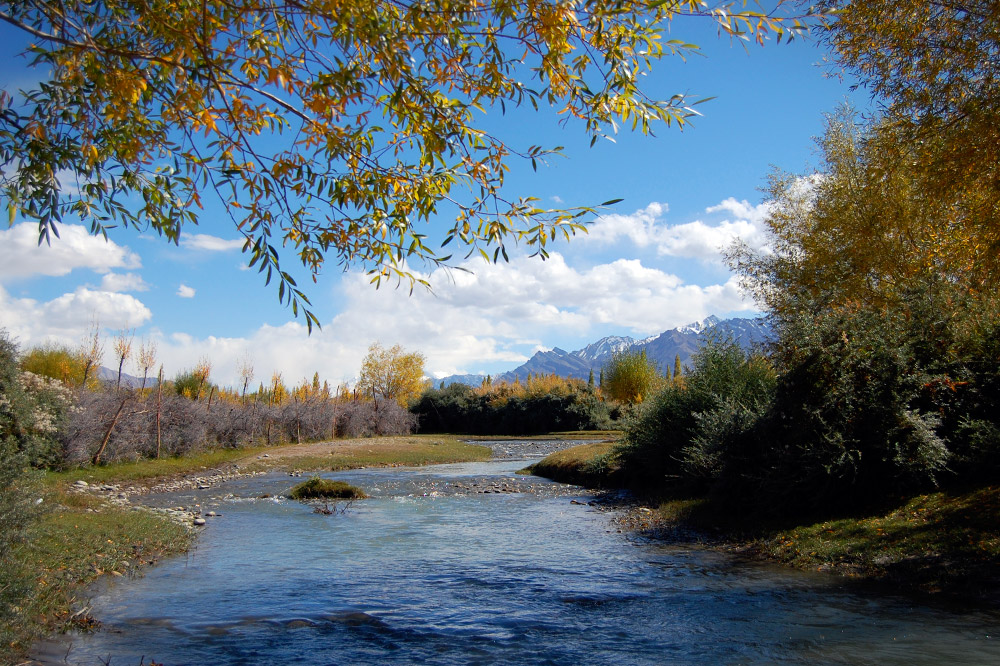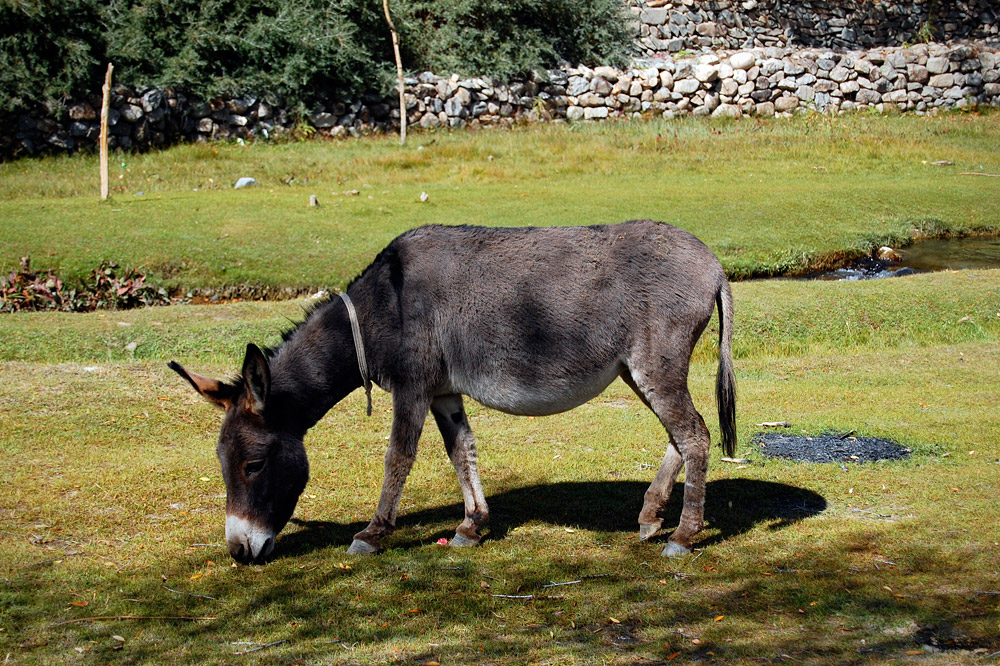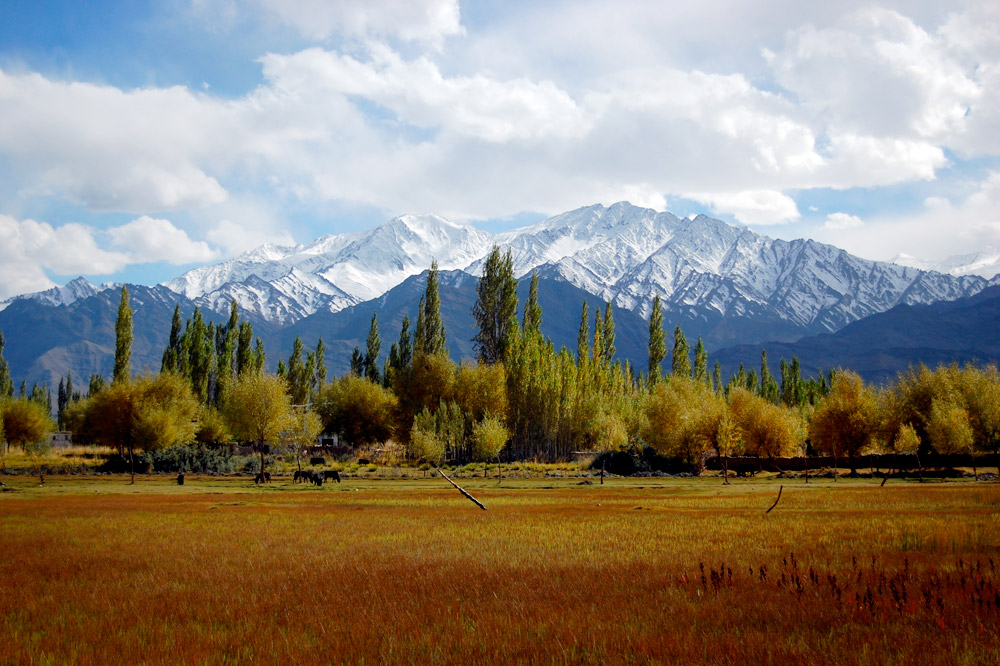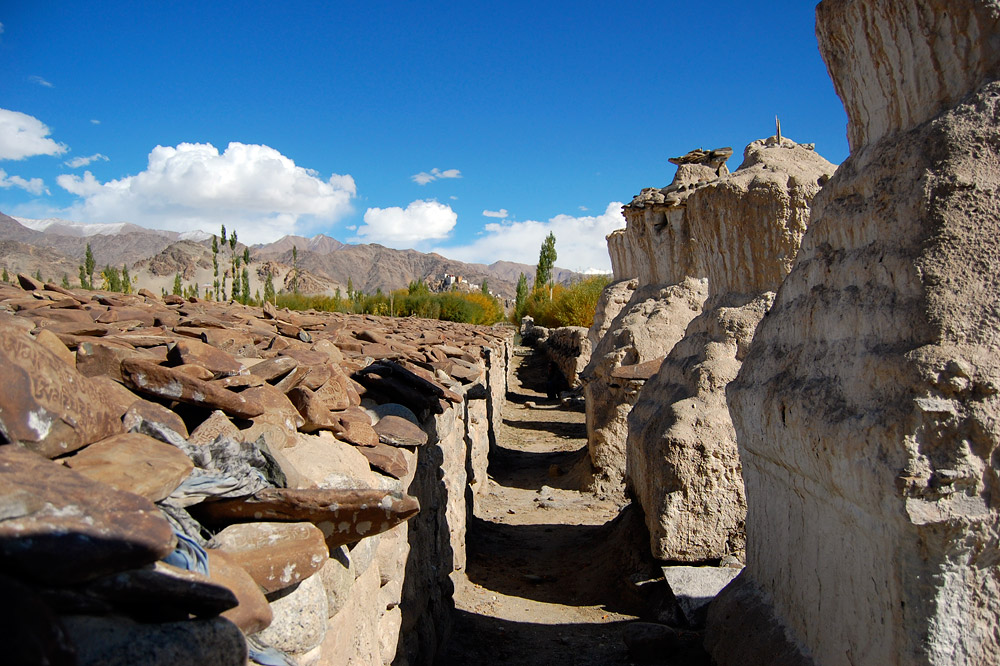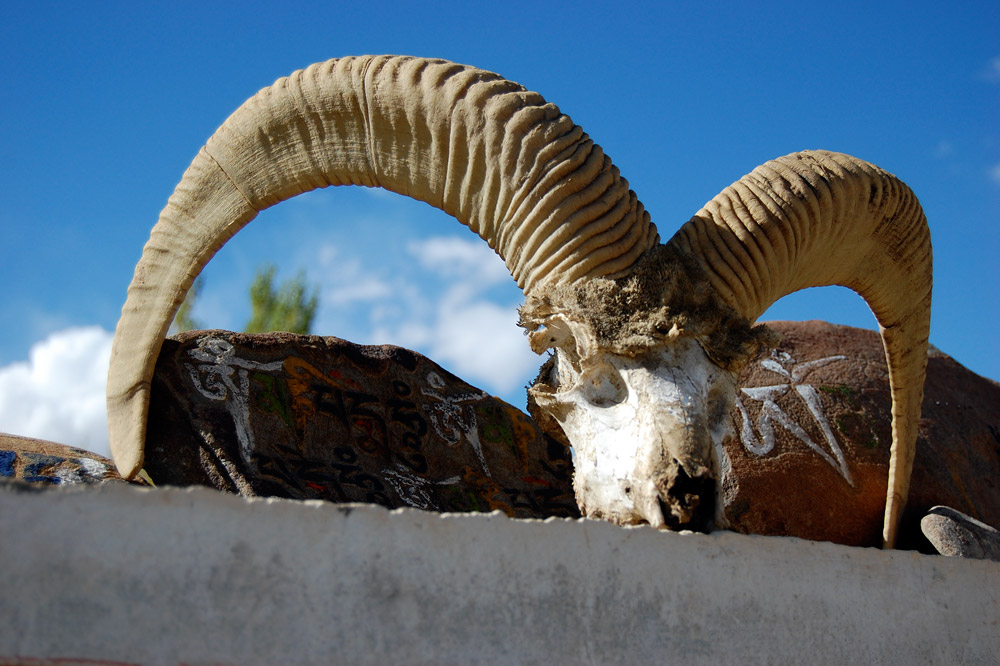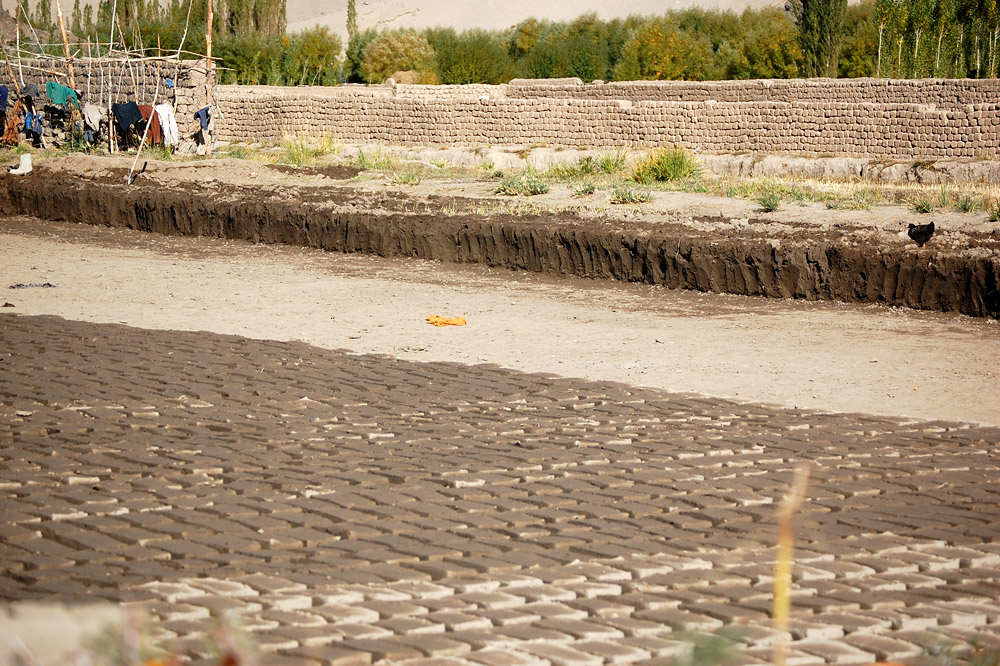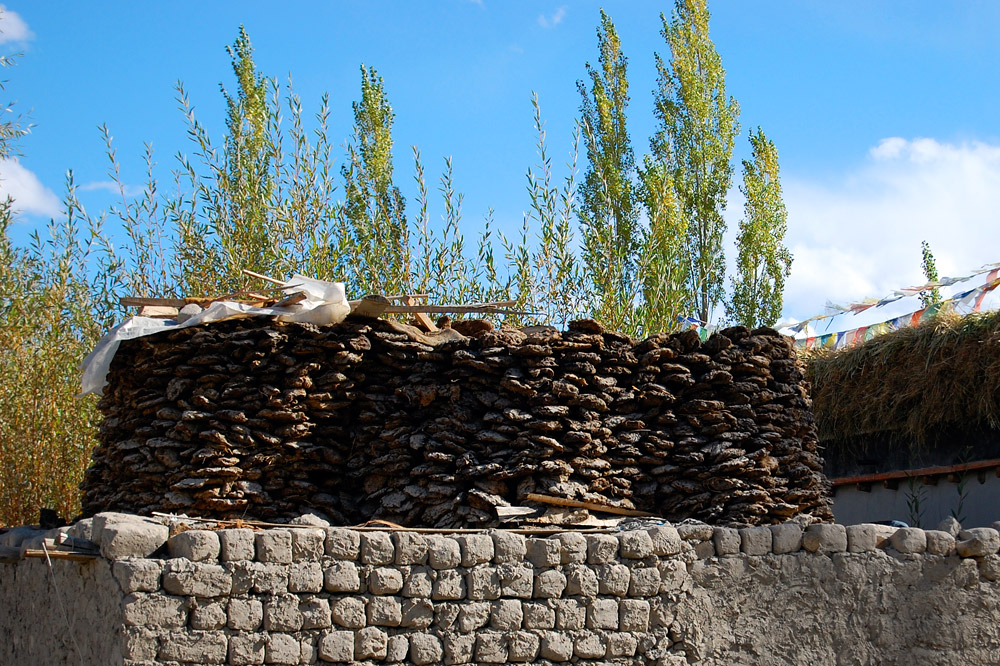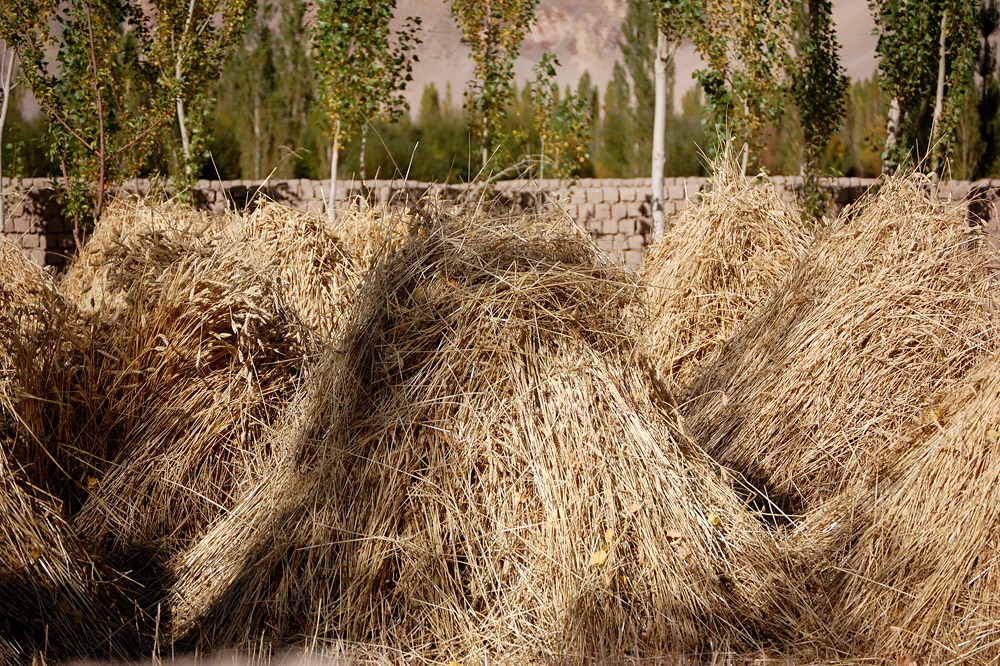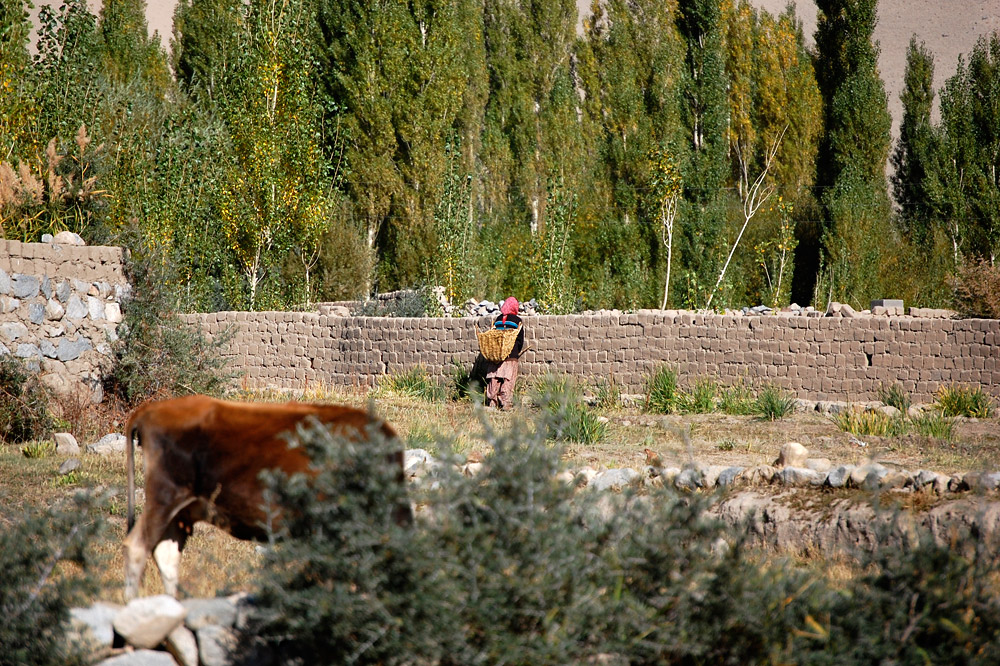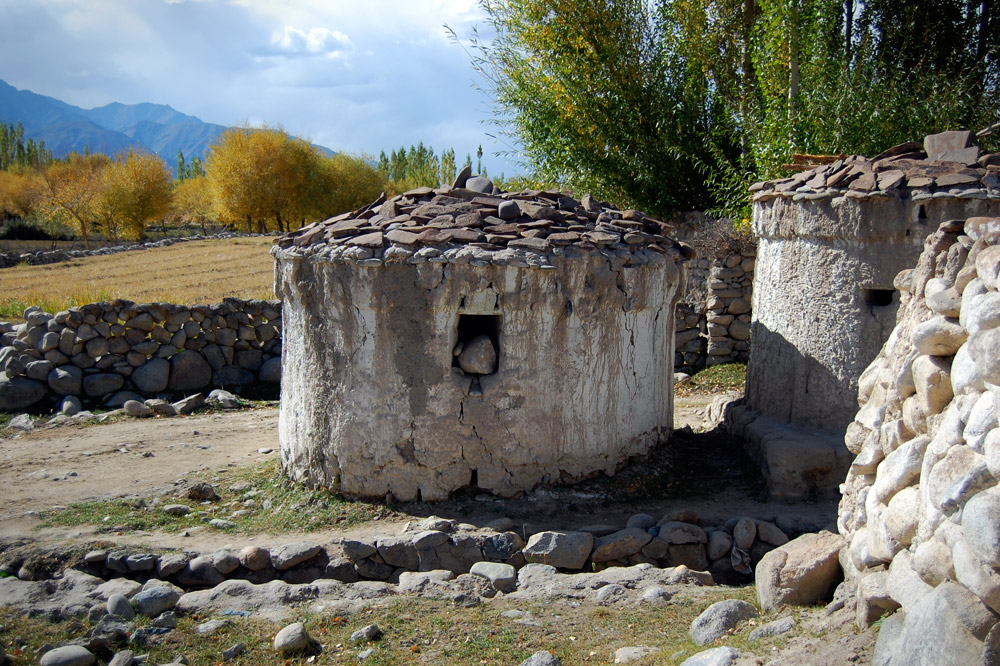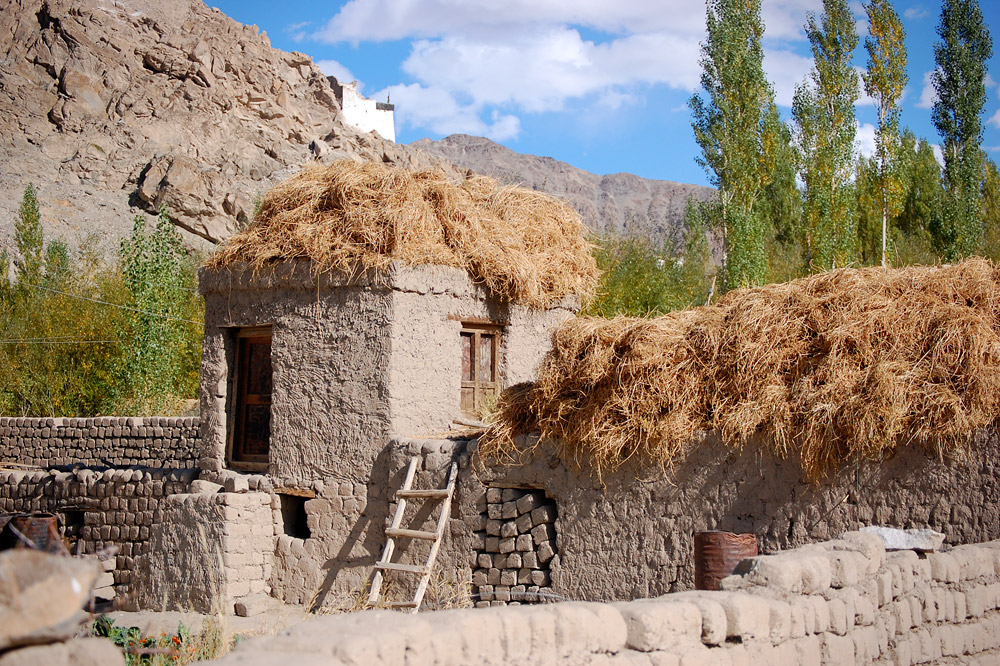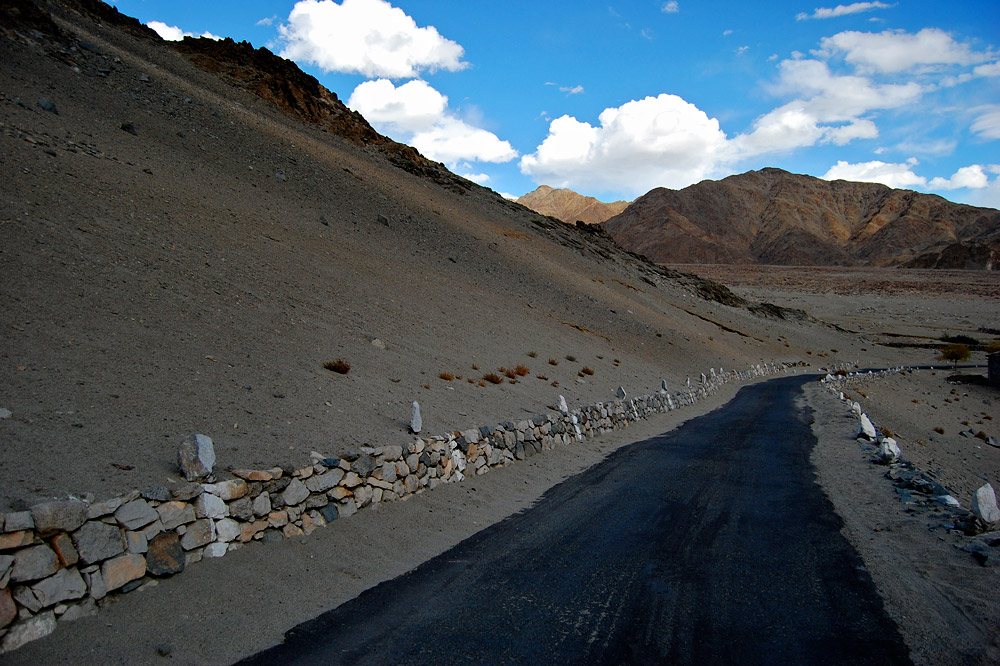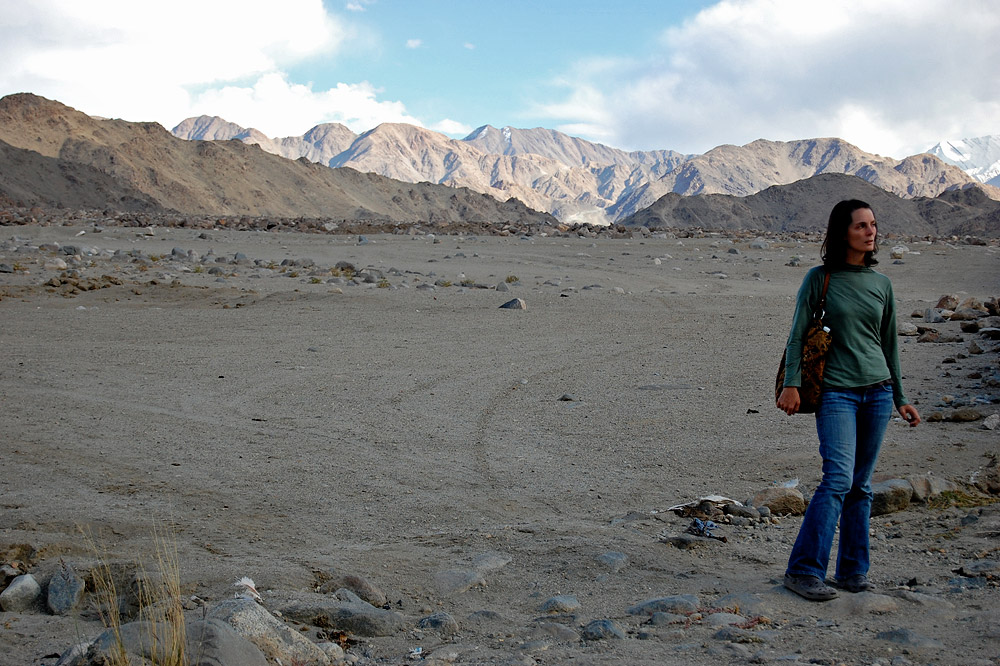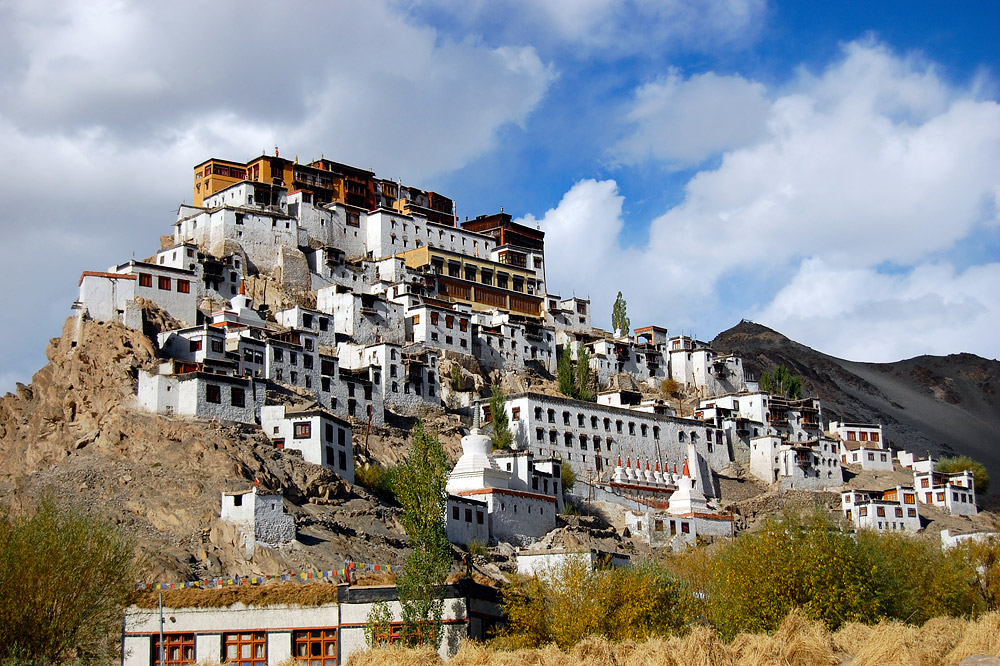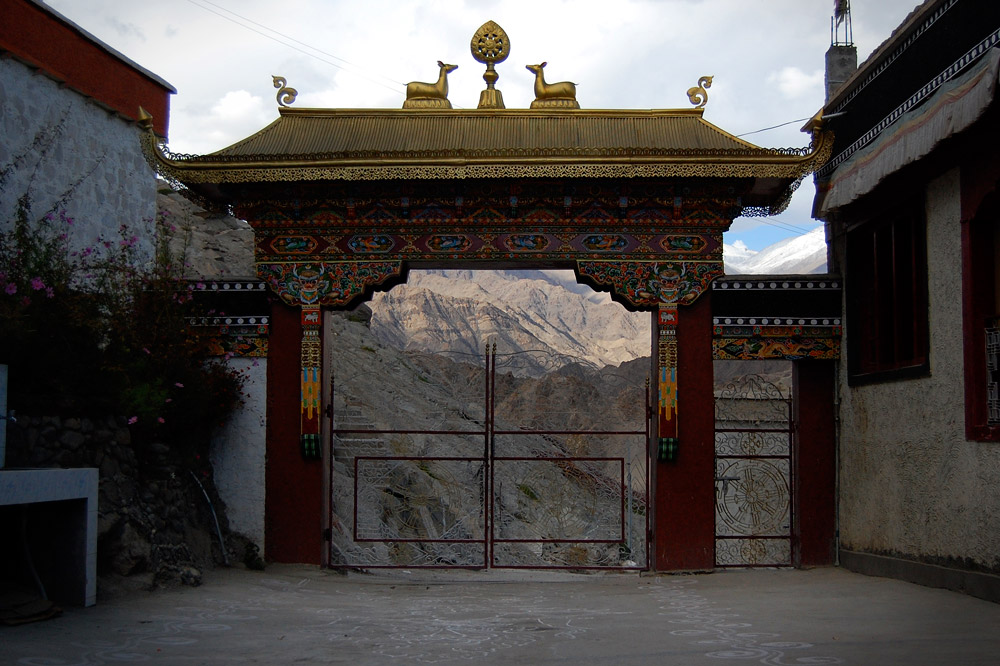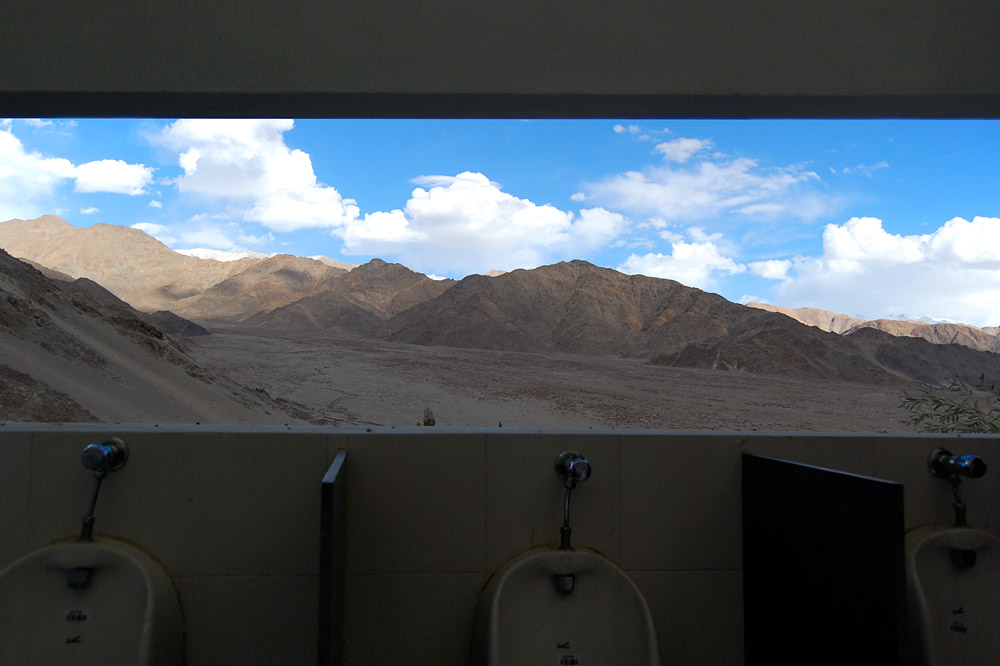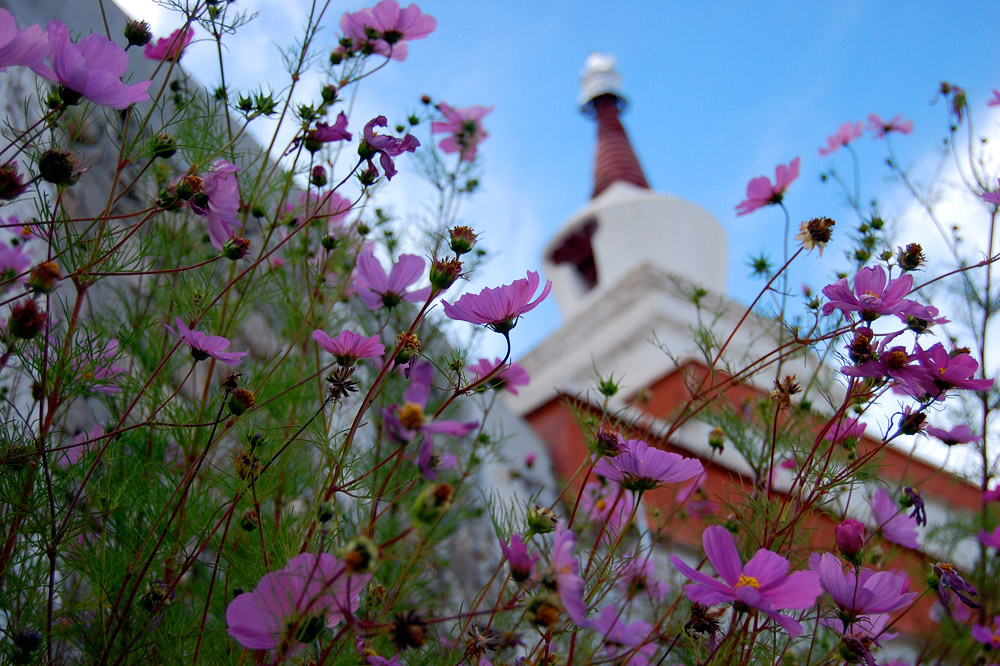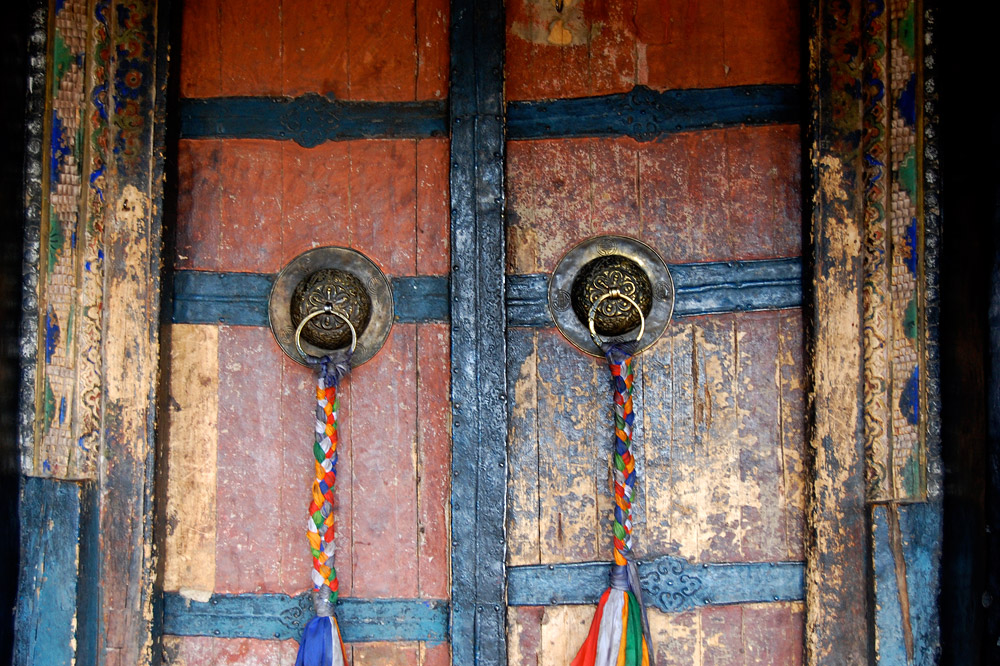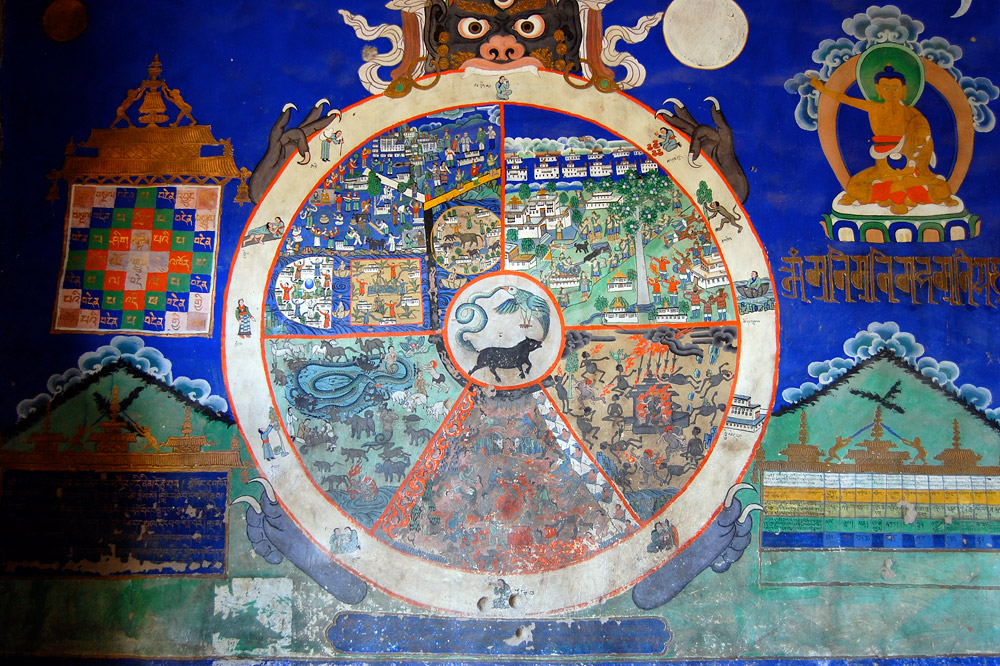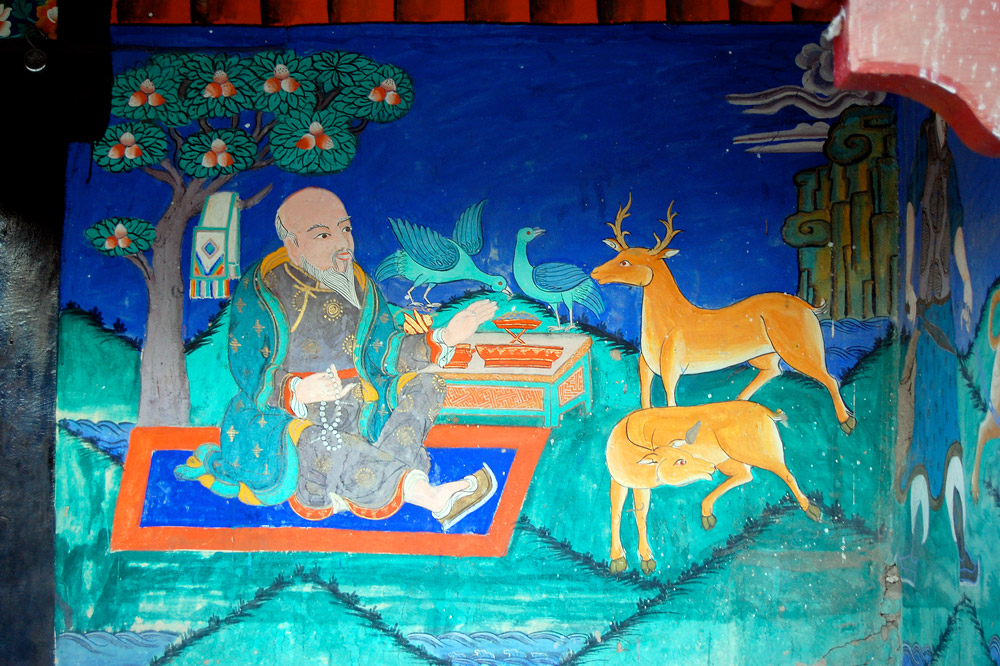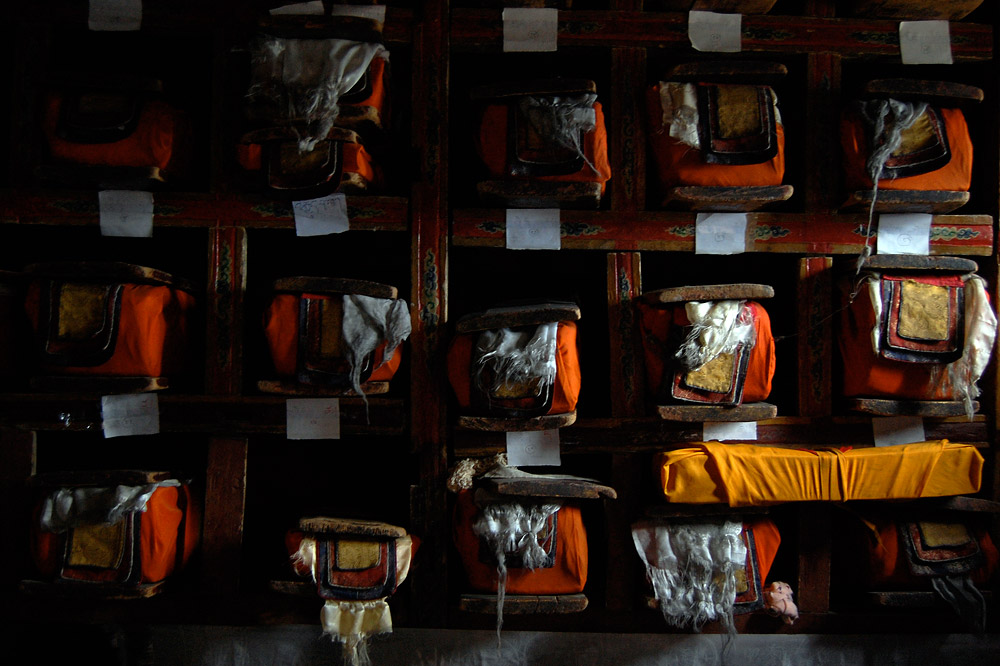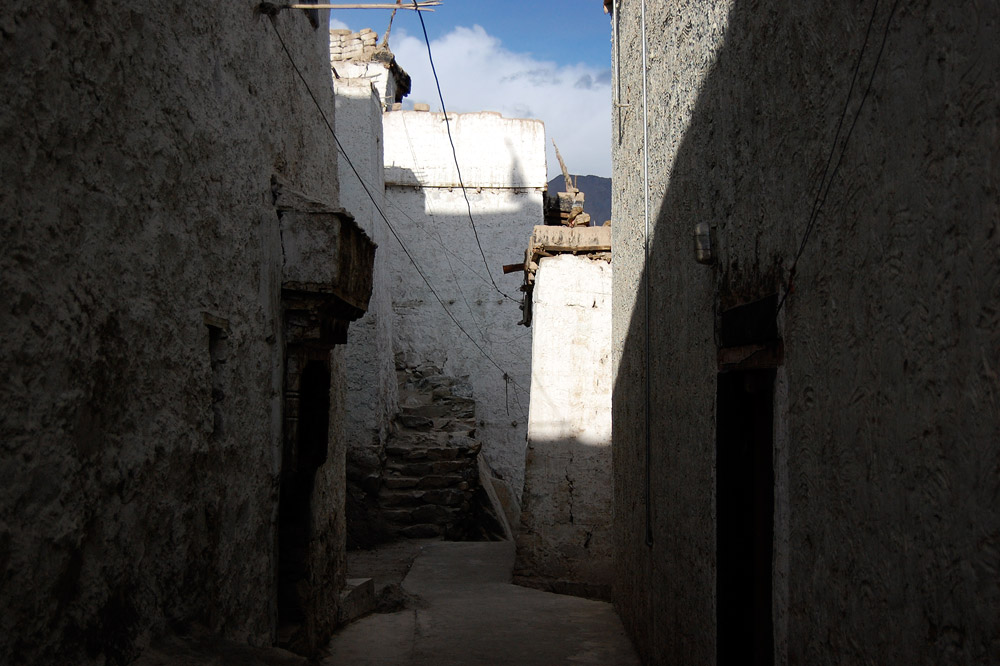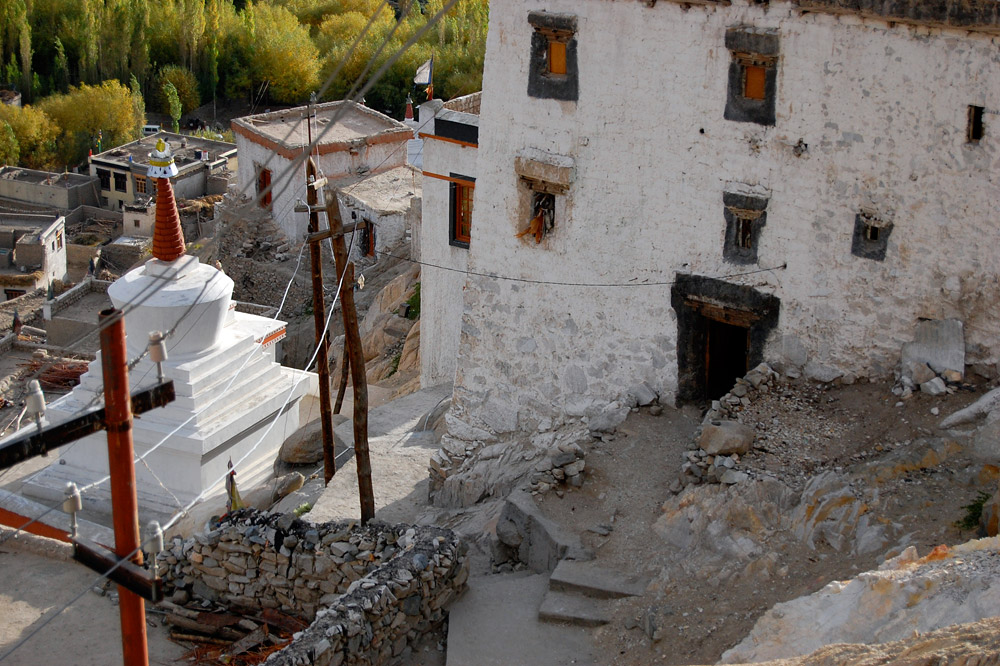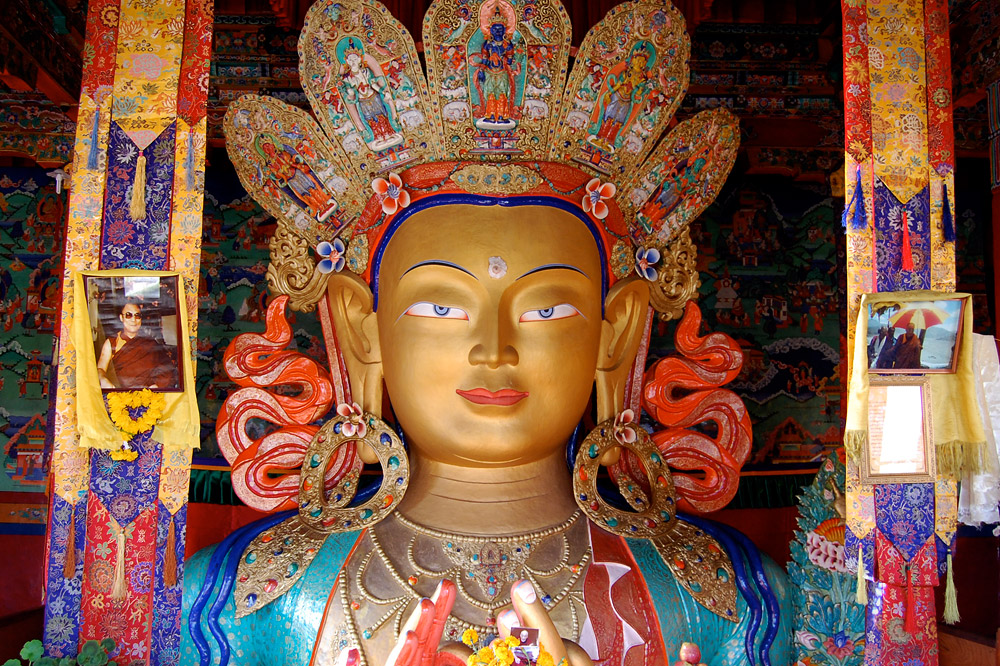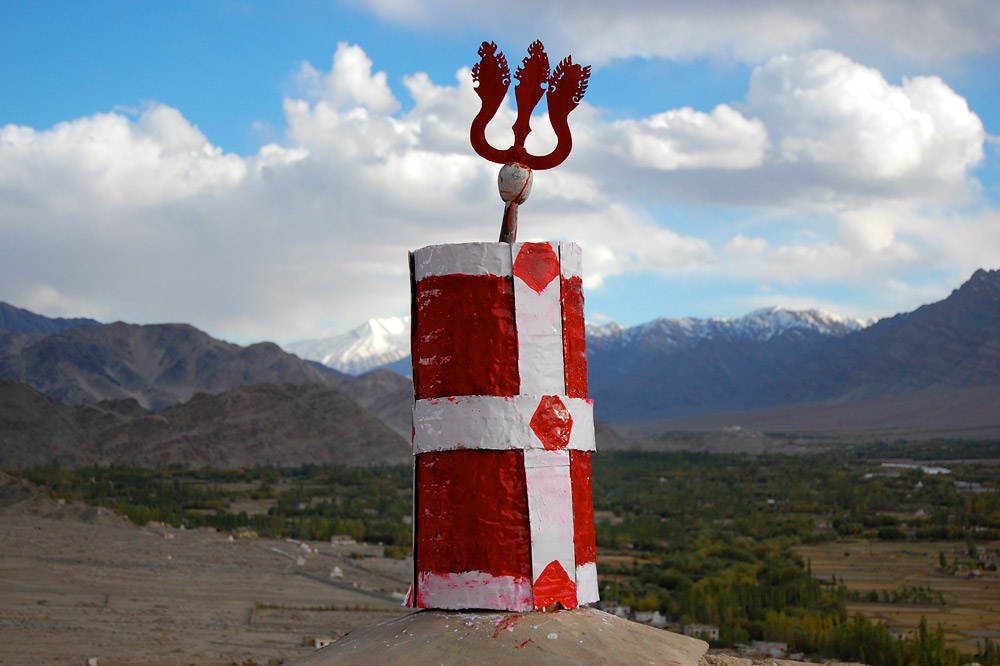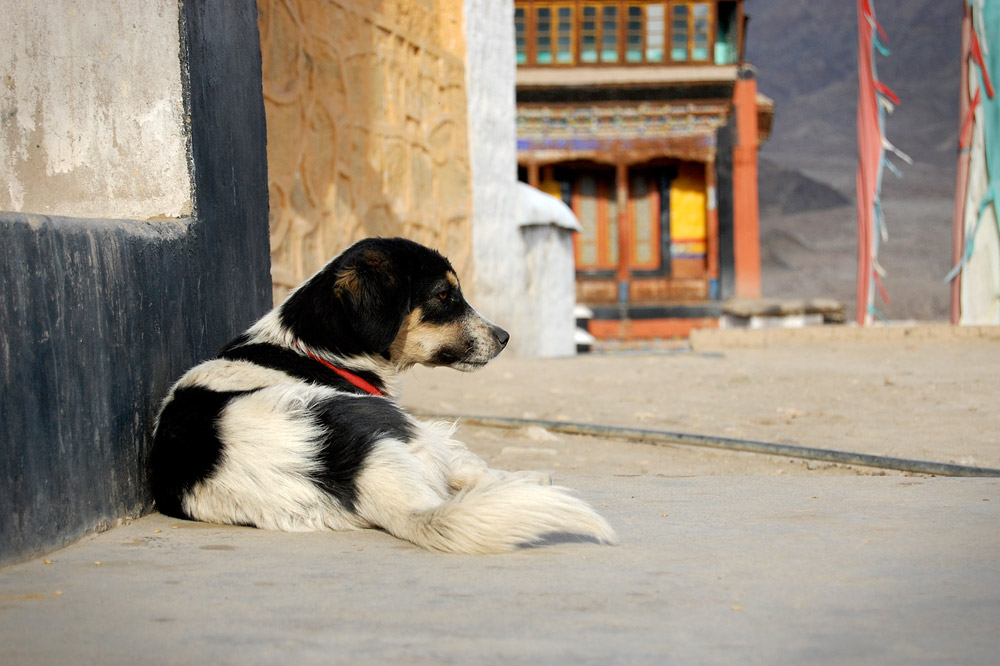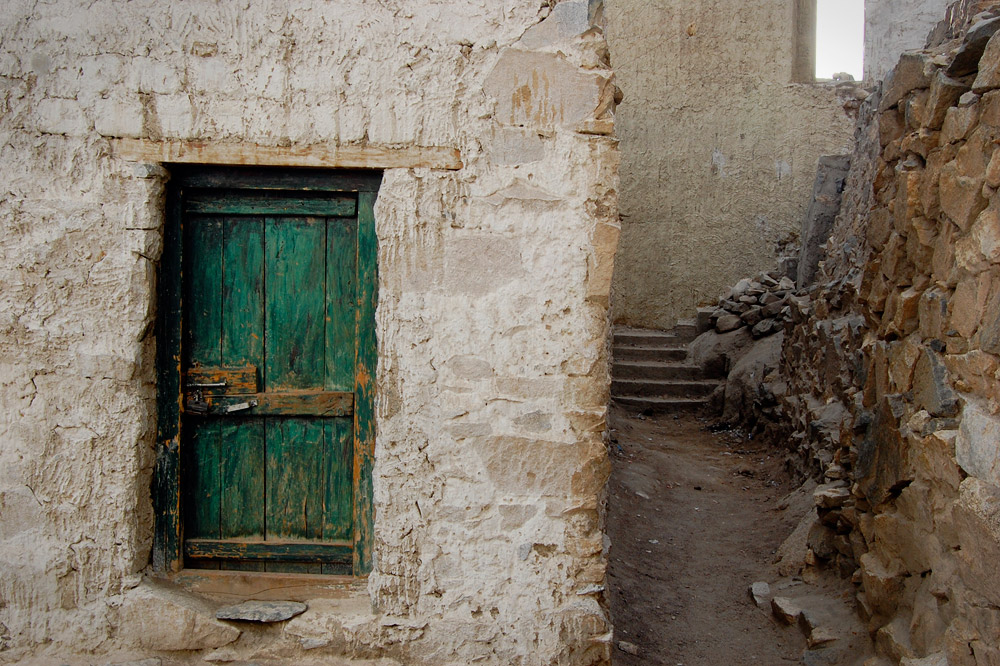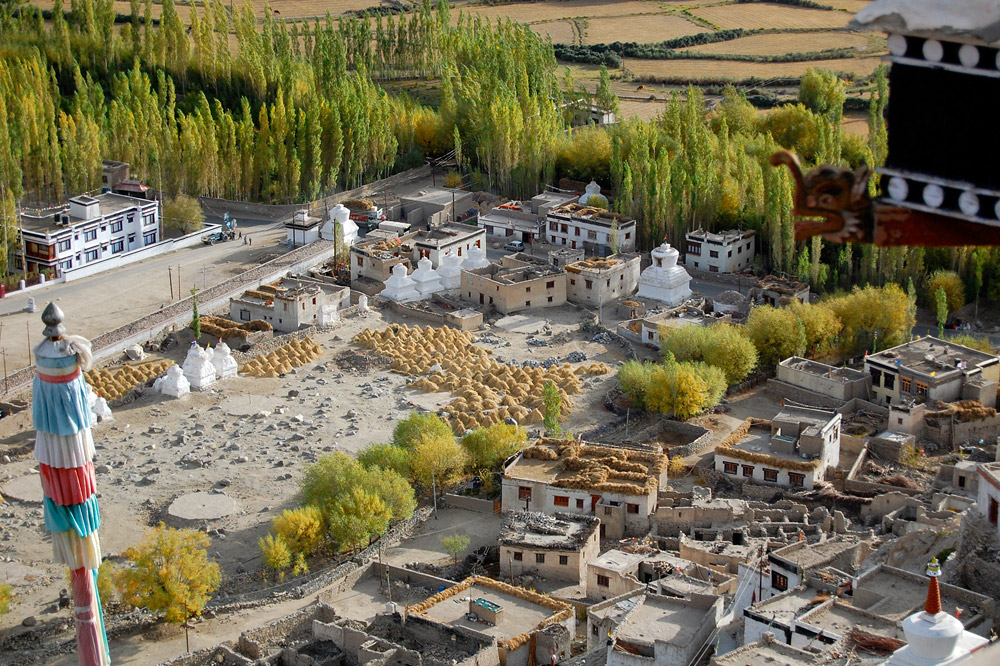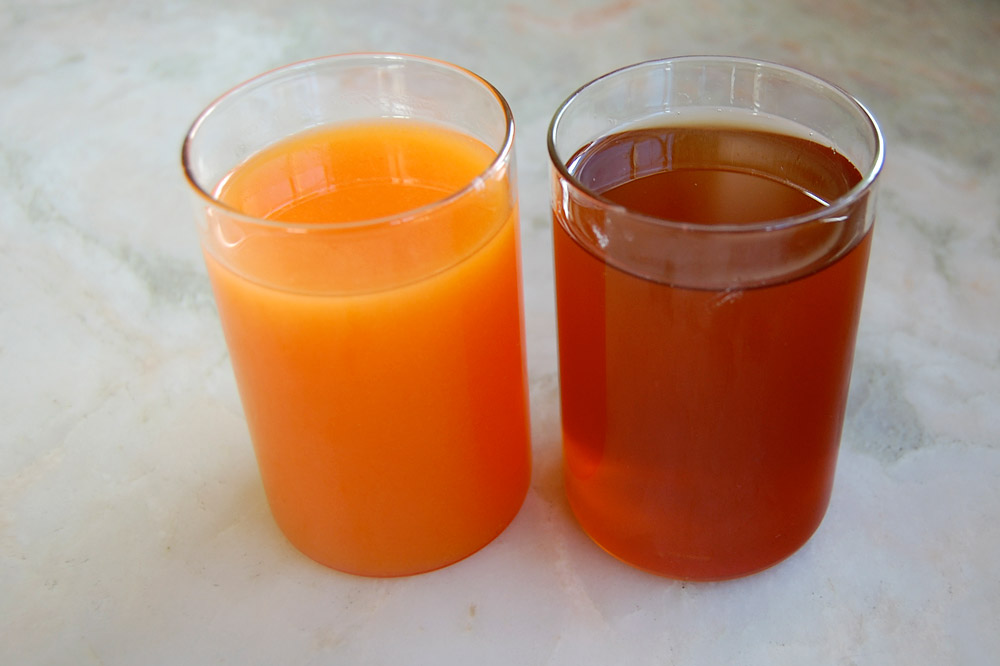Day Trip to Shey and Thiksey, Ladakh
Yesterday, J. and I planned to get an early start exploring some Buddhist gompas (monasteries) outside of Leh town. We woke at 8, ate breakfast and prepared to move all of our stuff to a more upscale guesthouse. But Dolma, our affable proprietress, had just walked down the road to take her granddaughter to school. We couldn’t begin our day until we paid her, so we waited around. After half an hour, we dragged a table out onto the sunny balcony to play cards. Eventually, a woman who I assume was her daughter came by. We paid her and rushed to the next guesthouse to drop off our bags. It was already noon and we were itching to go exploring. We didn’t want to hurt Dolma’s feelings, so J. told her we were going to stay the next few nights at the monasteries. It was a lie, and it sounded like it when she told it. I think Dolma thought so too. Her English might not be so good, but she’s sharp.
Shey is 15km southeast of Leh. It was once the summer capital of the region, but that was nearly 5 hundred years ago. There are two reliable methods to get there: by public bus and by chartered taxi van. As we were low on time, we got a van to take us there for 200Rs($4.5). The bus only costs 18Rs(40¢) each.
The ride passed by dry, crumbly hills and sprawling military bases. It was barren, moody landscape, though on the right side was farmland fed by the Indus river and its tributaries.
The road to Shey.
A calming symbol to slam a face into suddenly.
Valley view.
The driver dropped us off at the base of Shey Royal Palace, a partially restored and still functional complex built on a rocky hill. Next to the road was a large, fenced off marsh and lake that used to be a royal fish pond. We hiked up and explored the complex, even the high crumbling tower.
Approaching Shey Royal Palace, Gompa, and Fort.
Markings.
Almost at the structure.
Steps.
Recently rennovated.
The main gate.
Inside the main complex.
Me.
An open courtyard at the top of the gompa that housed the main, gilded chorten (stupa).
Whitewashed stones at the base of a whitewashed chorten.
Another weathered chorten seen from above.
Some ruins of lower Shey Fort.
Soot darkened room used for burning trash.
One of many prayer wheels. The road leading up the hill was lined with them.
Various oils used as candle fuel.
By scrambling across a precarious ridge we found the path leading up to the sprawling ruins of Shey Fort. Here’s J. at the base of the stairs.
What was once a large structure is now mostly gone, but there are still a few walls and some of the tower on the highest point of the hill. The view was amazing.
A monk climbing the tower.
The Shey area is littered with aging, white chortens.
Novice monks playing a ball game in the dirt outside the Shey Gompa.
The Indus river.
Our next destination for the day: the majestic Thiksey Gompa.
We descended and began our long walk to Thiksey Gompa. The guidebook said it was just 2km further down the road, but our convoluted route was at least 4km. Before heading towards it, I suggested we find the Indus river. We bought some snacks, but no water, and walked a bit before turning down a small dirt road. One one side was an irrigation canal full of slightly milky, but clear blueish water.
Looking back on Shey.
This sign would be a good motto for the ladies. The curves here are deathtraps, and they require a lot of honking for safety.
Large, shallow relief carved on the base of the hill.
A wooden bridge carrying water across another waterway. All over the valley are examples of inventive irrigation.
We couldn’t get to the main body of the Indus, so we made due sitting and eating snacks next to this. Donkeys were grazing all around us.
Also growing in abundance were bushes covered in edible tsestalulu (sea buckthorn) berries. They taste like strawberry/cranberry/persimmon.
Donkey.
Rather than walk along the main road, we took the smaller road near the fish pond. It passed through beautiful farmland and was one of the most picturesque strolls I’ve been on. The road was surrounded by trees, animals, crops, water, and rocky Buddhist ruins.
Most of the donkeys, chickens, cows, and horses were wandering free. Some were in fenced areas. The bulls weren’t. We passed their territory quickly as they stared back at us.
Grass, trees, mountains.
A long, rocky structure about 5 blocks long. It’s called a mani, and is capped with engraved stones that mark gratitude for wishes fulfilled or an important occasion. Mani walls are 1-2m high, 3m across and a few meters to almost a kilometer in length.
Ram’s skull.
All along the road, were mud brick making enterprises. In this picture, the maker dug the mud from the ground and set the blocks out to dry in the depression. On each property, there was a temporary home made of of mud bricks. The permanent homes are made of mud brick too, but these were more modest and sloppy. Other sources of brick mud came from dredging a water channel along the road.
House with a large stack of dried dung to be used as fuel during the winter.
Stacks of hay.
Farmer looking a wall, Blair Witch style.
Structure of unknown purpose.
Mud brick house insulated with hay.
By about 4PM, we made it to the small town of Thiksey. J. was hungry as we hadn’t eaten lunch. I was thirsty. The restaurant I had promised her was closed, but a shop owner told us that there was another in the monastery. The road up the hill was at a gradual slope because it curved so far out of the way to hug the hillside.
Looking back on the road.
J. in the middle of nowhere.
Holy crap, Thiksey Gompa is a beautiful sight. I’ve never seen anything like it. Numerous buildings cling to the hillside: the monks residences and kitchens at the bottom, schools, prayer halls, and other religious rooms at the top.
The gate to Thiksey Gompa.
I stopped to use the bathroom and was greeted with this view out of the open wall behind the urinals.
Flowers and chorten.
Elaborately decorated woodwork.
Dark, upstairs room of unknown purpose. There are many empty rooms of unknown purpose in the complex.
Doors to a prayer hall.
The gilded chorten cap looks over the valley.
Wonky doors and windows of the library.
Flowers.
Mural of the wheel of life. The gompa was decorated with many colorful murals.
Another mural.
Tunnel.
Window and mountains.
Inside on of the prayer rooms were walls lined with wood and cloth boxes. The boxes contained pandora.
Between the buildings.
Buildings on the hill. Wandering around made me feel like I was in Greece. I’ve never been to Greece, but it felt like some combination of what I think Greece is like combined with Tibet. I’ve never been to Tibet, but it’s said that Ladakh is greatly influenced by it. Buddhism started here and spread to Tibet, but Tibet refined it and passed it back. Much of the architecture is shared.
Enormous Buddha statue over two floors tall. He’s seated on a lotus.
Large prayer wheel.
Trishula.
Gompa dog.
Green door.
Stacks of drying hay.
Shadowy interior.
The gompa closed at six, but we were done looking around by 5. Starved, we ordered some India food from the abandoned restaurant in the monastery. The cooks were laughing and singing and having a ball in the kitchen. Our food was delicious. We had planned on taking the local bus back, but the waiter said the last bus came by the main road at 6PM. We ate quickly, paid our bill, and hitchhiked down the hill to the main road just in time to catch the bus.
This bull was waiting at the bus stop too.
The local bus was a fun ride. We flagged it down. The driver had a wingman that took fares, handed him his cell phone, and changed the cassette tape playing above the window. The driver had capricious musical taste, and the tape kept getting swapped. I could tell no difference in the music, other than some tapes were degraded with warping sound. The cabin of the bus was decorated with charms and a picture of the Dalhi Lama surrounded by Christmas lights.
During the trip, other people would flag the bus and climb inside. It got so full that people had to start sitting on the roof. The driver honked and merged as best as he could in an overloaded, soot-spewing bus.
We were dropped off on the south side of town. It was a 30 minute walk back in the dark to our new, posh, garden guesthouse. But before retiring, we stopped to refill our water bottles and get some juice at a place called Dzomsa. There is no recycling in this valley, so reusing bottles is the only way to reduce trash. The juice is excellent too. J. and I split a glass of organic apricot and sea buckthorn berry. Both grown in abundance here.
The juices of Ladakh. Buckthorn is the orange one.
Today is a day of rest. We have two more days before heading back into the warm, dirty madness of greater India.


